Whiskey (or whisky, without the ‘e’, if you’re in Scotland) is one of the world’s most popular spirits. Dark, complex and delicious, there’s a reason it’s a go-to drink for men across the globe.
But it’s easy to get stuck in your ways, only ever drinking your favourite drop and never trying anything new. There’s a whole world of whisk(e)y out there aside from the usual brand suspects pumped unrelentingly out of the distilleries of Scotland and the American South.
Of course, there are still plenty of whisk(e)y brands coming out of the old-school powerhouses as well… So we’re undertaking the daunting task of guiding you on a whisk(e)y world tour. Here are 57 whisk(e)y brands that you should be aware of when you see them sitting on the shelf of any bar.
You’ll probably know some, you probably won’t know a lot, but whisk(e)y is as much about the journey as it is the destination anyway. Slàinte.
Johnnie Walker
Pros
- Great if you want a whiskey that is more affordable
- You have a wide range of whiskey options
- Smooth drink that enhances your senses
- You can share these drinks on any occasion
Cons
- The blended Scotch may not be ideal for single malt fans
Origin: Ayrshire, Scotland
The best-selling and most famous brand of Scotch whisky in the world, Johnnie Walker is an absolute icon. Its many whiskies range from the entry-level Red Label to the tip-top Blue Label. Johnnie Double Black, Green, Black, Gold and Platinum labels (in that order) all provide happy mediums to suit your budget.
They also do a range of John Walker & Sons whiskeys, which are about as premium as they come.
Chivas Regal
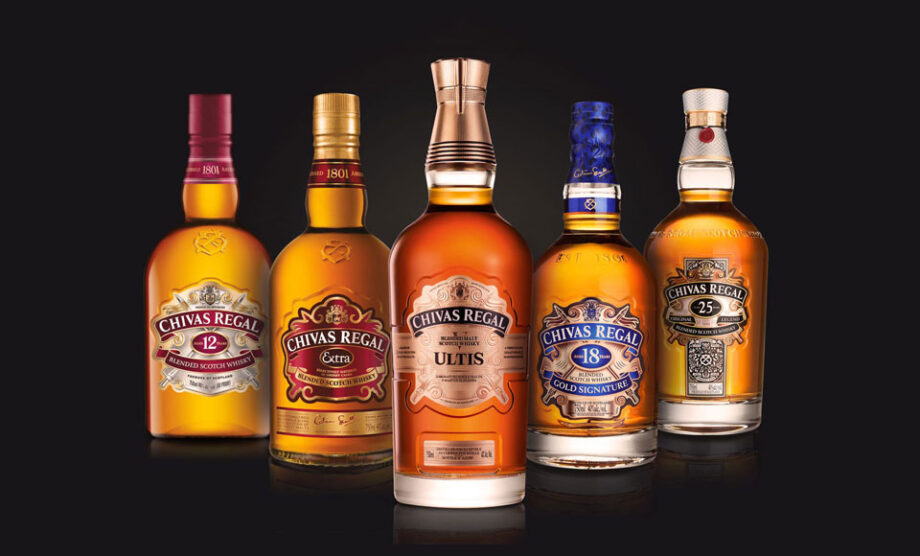 2/54
2/54Pros
- They have whiskey options that fit all budgets
- They use some of the rarest single-malt whiskeys
- Smooth finish that anyone will love
- It’s very tasty and opulent
Cons
- It’s not the most complex Scotch
Origin: Speyside, Scotland
Chivas Regal is another top-selling Scotch brand. Their range starts from the cheapest 12-Year-Old, through the mid-range 18-Year-Old, to the most expensive 25-Year-Old, Ultis and “The Icon” whiskys.
4.5L cradles of Chivas 12 are also available for about $350 a pop, if you prefer to take a more Costco-inspired approach to your Scotch.
Glenfiddich
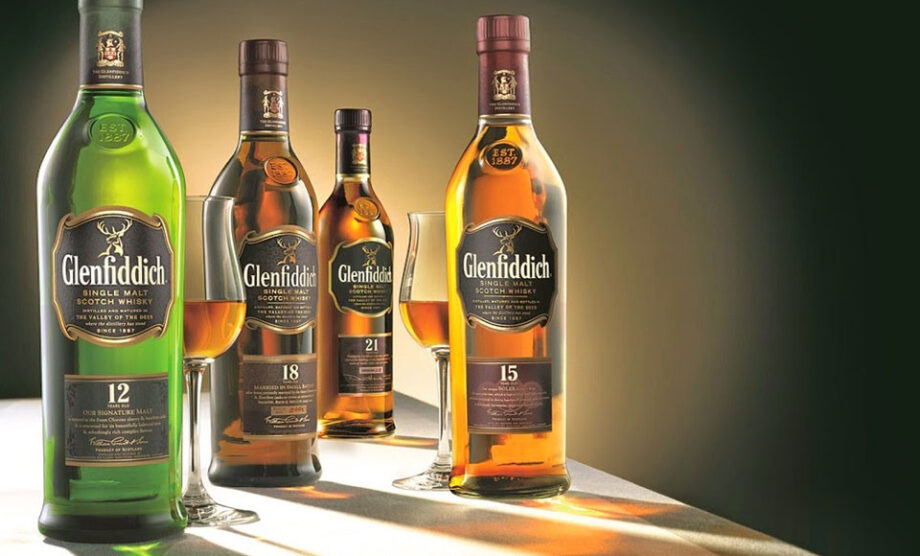 3/54
3/54Pros
- They have a larger variety of whiskeys of all ages
- They know how to provide the perfect balance between flavour and aroma
- It’s a good whiskey for beginners
Cons
- They have many single malt options, so fans of blends will not be huge fans
Origin: Dufftown, Scotland
Famous, yet more experimental with a wider range of ages available, all of which are single malt. For the uneducated, that means that only one type of malted grain can be used in the whisky’s production, which in the case of Scotch is always barley.
Glenfiddich also sells a 50-year-old whiskey which goes for $55k a bottle. Ooft.
Talisker
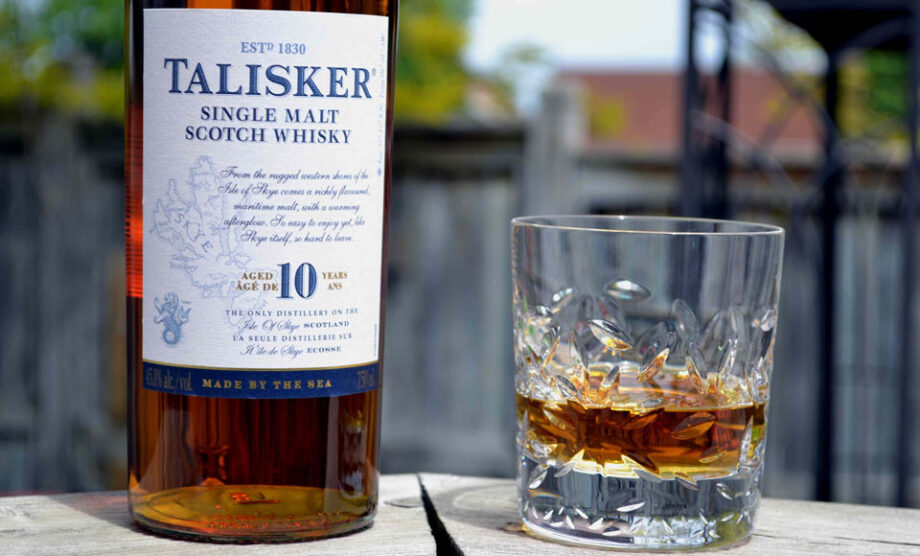 4/54
4/54Pros
- Their single malt whiskeys are very intense
- They range from 10 to 35 years old
- It’s one of the most affordable options
Cons
- It has a lot of added colour
Origin: Carbost, Scotland
Based on the Isle of Skye, making them one of the most remote distilleries in Scotland, Talisker make famously smoky, intense single malt whiskeys that are regarded as some of the classic examples of Scotch, ranging between 10 and 35 years old. These are some of the best whiskeys in the world.
Fettercairn
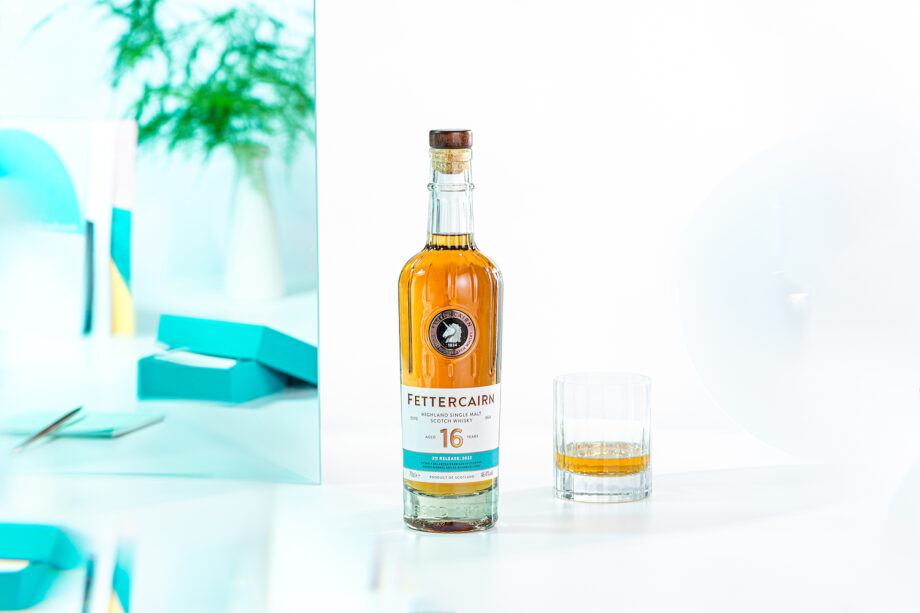 5/54
5/54Pros
- The distillery is almost 200 years old
- The whiskey goes through a unique maturation journey
- Delicious and unmatched taste
Origin: Scotland
An almost 200-year-old distillery nestled in the foothills of the Cairngorms in the Scottish Highlands, Fettercairn has a long and illustrious history as the whisky of choice for prime ministers, pioneers and poets alike.
Fettercairn’s range starts with their 12 Year Old and goes all the way up to their 50 Year Old, but we’re fans of their 16 Year Old releases, which all feature unique maturation journeys designed to enhance the tropical distillery character derived from Fettercairn’s unique copper cooling ring distillation process.
Lagavulin
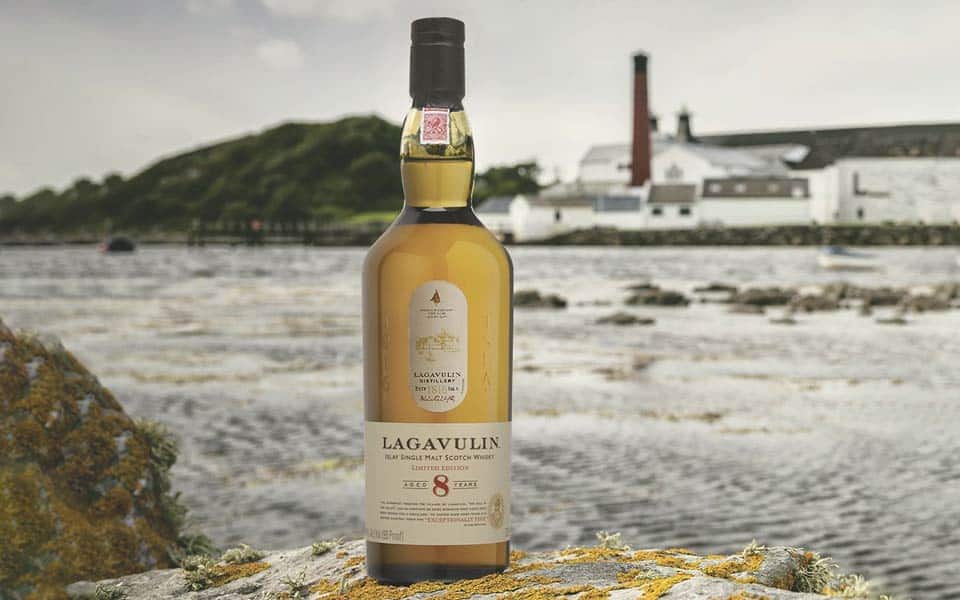 6/54
6/54Pros
- It’s very cheap and accessible
- It’s very smoky and delicious
- The brand is a trusted Islay one
- The finish is balanced, and it sticks around
Cons
- Some people may not enjoy the smokiness
Origin: Islay, Scotland
The ‘entry-level’ bottle of this Islay single malt is aged for 16 years, but Lagavulin also offers a Distiller’s Edition, finished in sherry casks, alongside occasional rare and exclusive drops.
Consistently the recipient of gold awards, this is a Scotch you simply have to try. Smoky, peaty and delicious, there’s a reason people love Lagavulin.
Glenmorangie
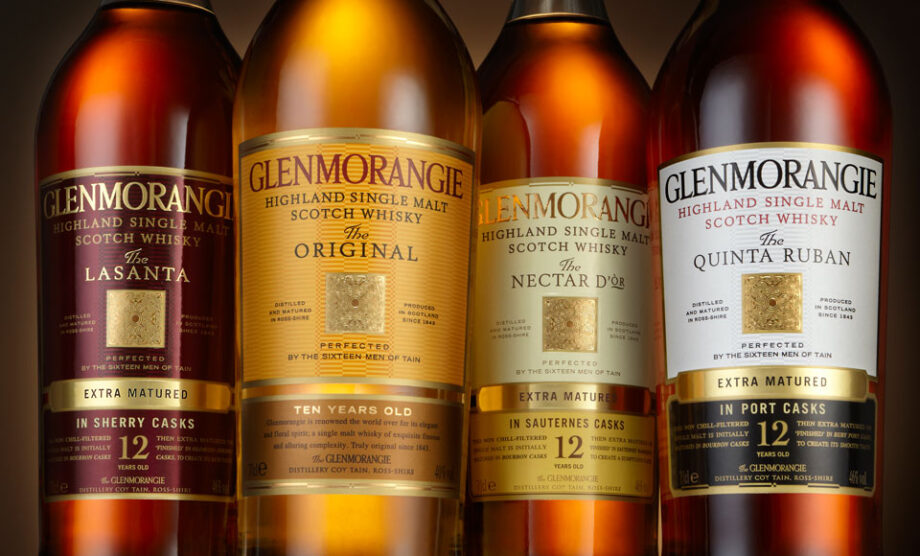 7/54
7/54Pros
- It’s a good value-for-money brand for whiskey
- They use Scotland’s tallest stills
- The flavour is pure, floral, fruity, and light
Cons
- Some of the whiskey bottles are quite untraditional
Origin: Ross, Scotland
Glenmorangie makes only single malt whiskies deep in the Scottish Highlands and represent one of the best value-for-money whisky brands on the planet. They use the tallest stills in Scotland, which they claim gives their whisky a lighter, purer, more floral, fruity flavour.
Glenkinchie
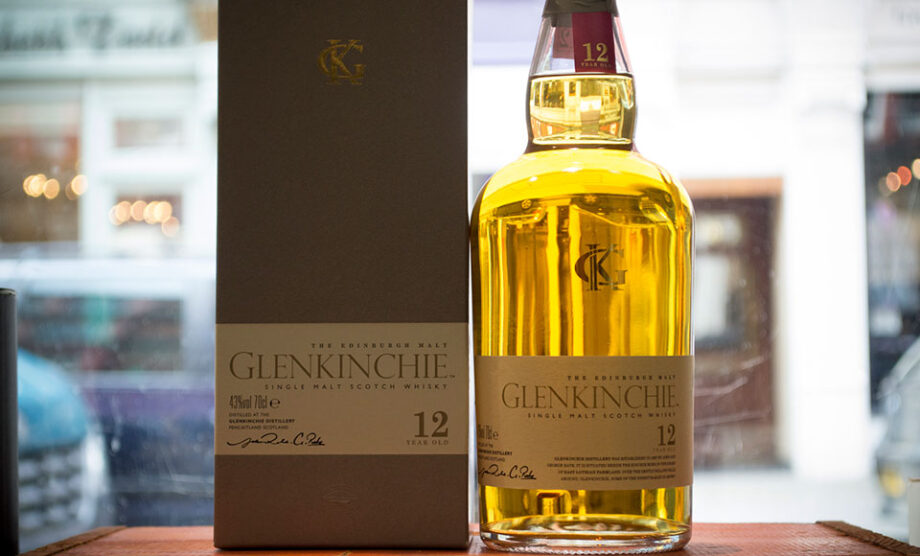 8/54
8/54Pros
- It’s one of the six Lowland distilleries in Scotland
- Very sweet taste that will appeal even to those who are not fans of whiskey
- The drinks have a nice dry finish
Cons
- Some whiskeys may be too light for some people
Origin: East Lothian, Scotland
One of Scotland’s six Lowland distilleries and one of the ‘four pillars’ of Johnnie Walker, Glenkinchie is a highly underrated whisky brand.
Most Lowland distilleries triple-distil their best whiskey, giving it a lighter taste. Lowland Scotches are sweeter, brighter, and much more flowery on the palate as a rule, with Glenkinchie being the most popular of the lot.
Glen Grant
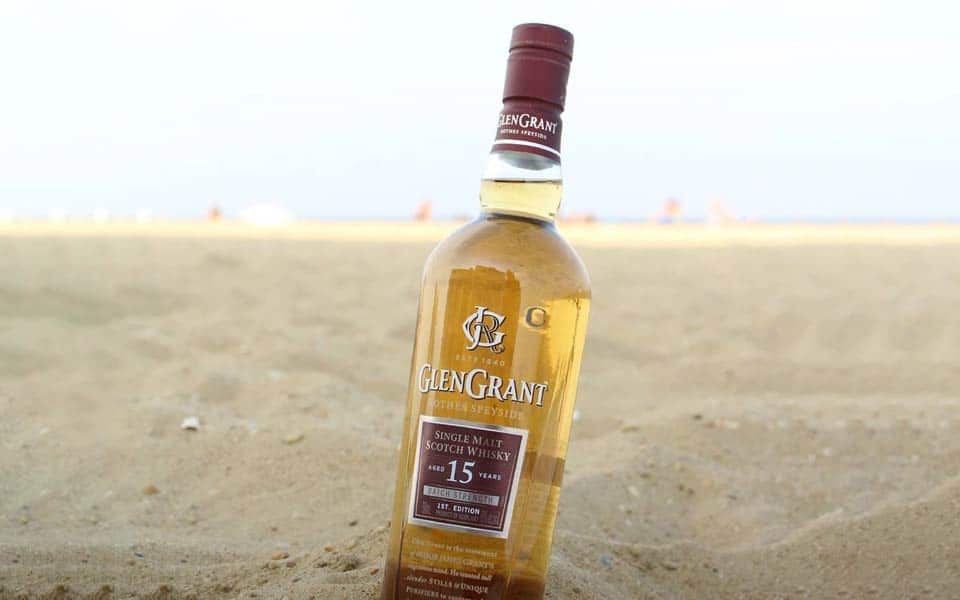 9/54
9/54Pros
- It’s one of the first distilleries to create Scotch single malt
- The drinks have won multiple awards
- Lots of limited edition whiskeys for fans
Cons
- The alcohol taste may be too strong
Origin: Speyside, Scotland
Founded in 1840 by two brothers, the Glen Grant distillery was one of the pioneers of Scotch single malt which has resulted in worldwide popularity today. Its whiskies have won several awards and with a range of aged bottles available including some Limited Editions, there is something for everyone.
Dimple
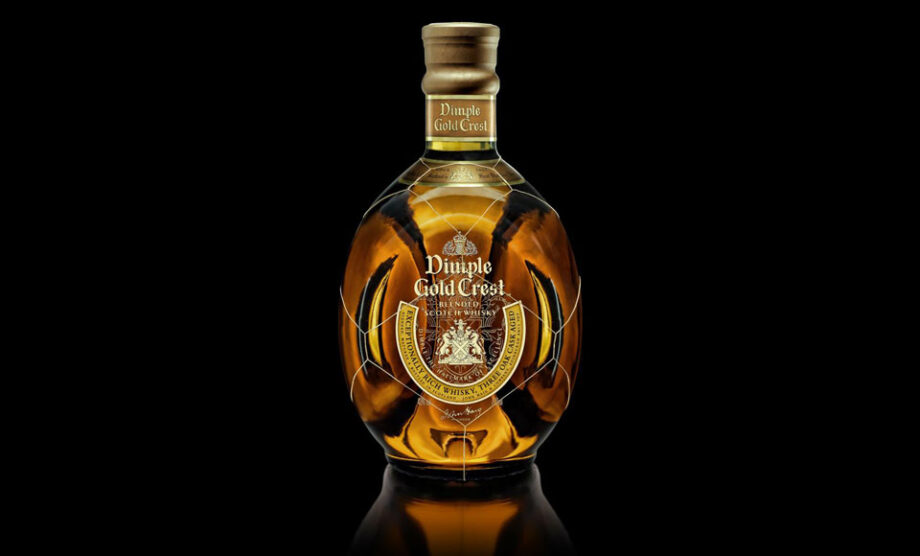 10/54
10/54Pros
- Amazing value for money
- These beverages are great for a beginner
- The drinks are very light and tasty
Cons
- It’s not the most complex drink
Origin: Clackmannan, Scotland
Famous for the rounded bottle, Dimple makes 12 and 15 Year Old blends generally regarded as fantastic value for money. Well rounded, light and tasty, without anything harsh, and probably the cheapest 15 Year Old scotch you’re gonna find. Good for a beginner!
The Glenlivet
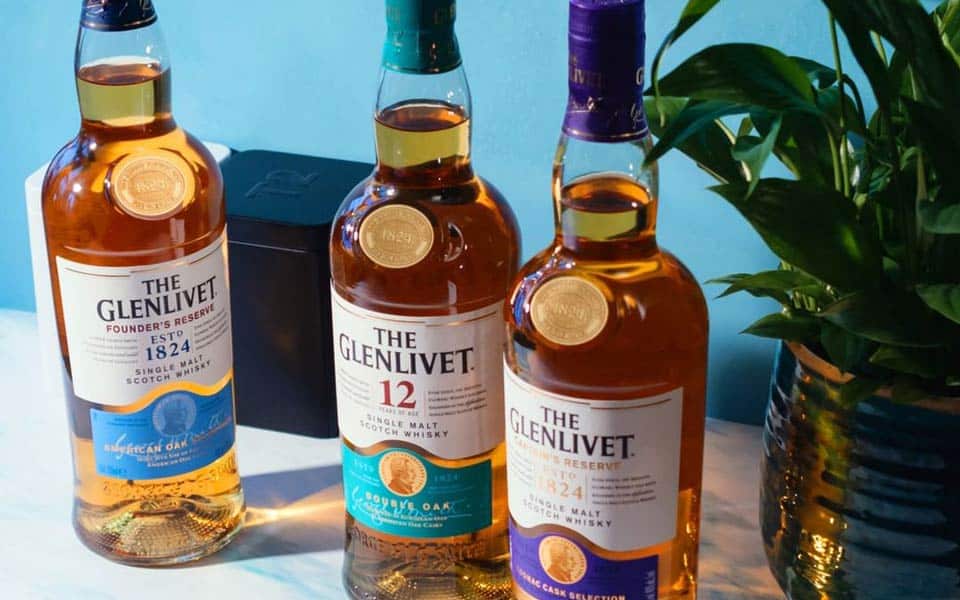 11/54
11/54Pros
- It’s one of the most affordable whiskeys
- They’ve been around for over 2 centuries
- It’s a premium brand
Cons
- The finish may not be great for people who aren’t used to whiskey
Origin: Clackmannan, Scotland
Hailing from the Scottish valley of the same name, this brand has been producing whisky since the 1800s. Recognised as a premium brand now, Glenlivet batches range from 12-year to 50-years of ageing, but no matter which you get, you’ll be rewarded with a delicious drop.
Monkey Shoulder
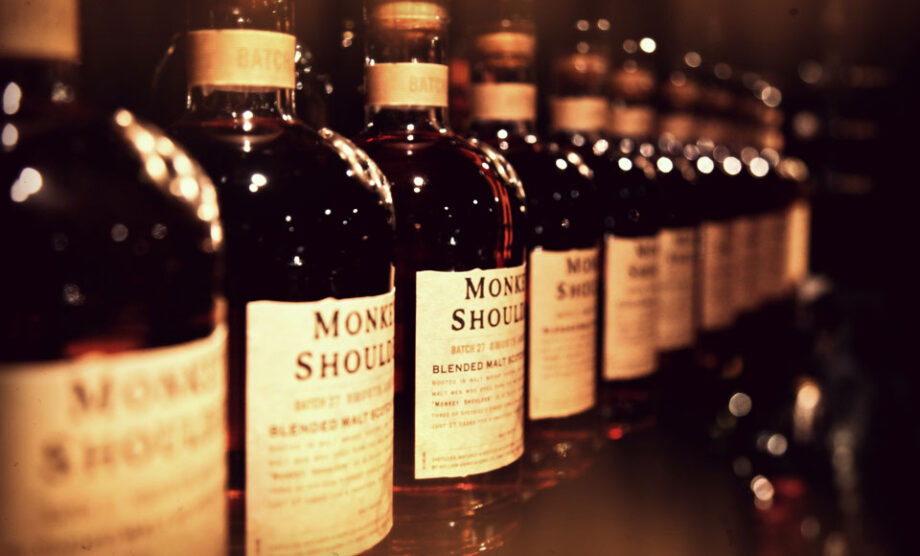 12/54
12/54Pros
- They use a blend of single malts from Glenfiddich, Balvenie, and Kininvie
- It’s very smooth and tasty
- It’s perfect for cocktails
Cons
- It’s not usually the best for those who are bigger fans of smoky or peaty whiskeys
Origin: Scotland
A premium whisky blend made of single malts from Kininvie, Balvenie and Glenfiddich, Monkey Shoulder is generally preferred for use in cocktails and with mixers, but it’s very smooth, very sweet and drinkable in its own right. Only 27 casks are used to make each batch though, which makes each bottle a little bit boutique.
Ballantine’s
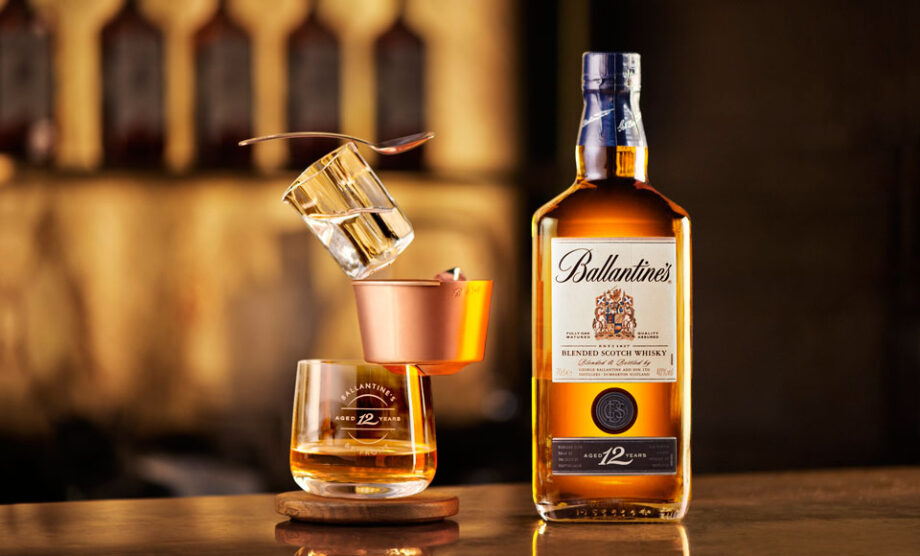 13/54
13/54Pros
- It has a very accessible price
- It mixes more than 50 single malts
- The whiskeys are perfect for those new to this type of drink
Cons
- It’s quite dull compared to pricier whiskeys
Origin: Dumbarton, Scotland
The everyday Ballantine’s Scotch is a blend of over 50 single malts and is a popular entry-level drop. Spend the extra $10-$20 and get the 12-Year-Old over the standard Ballantine’s though.
Dewar’s
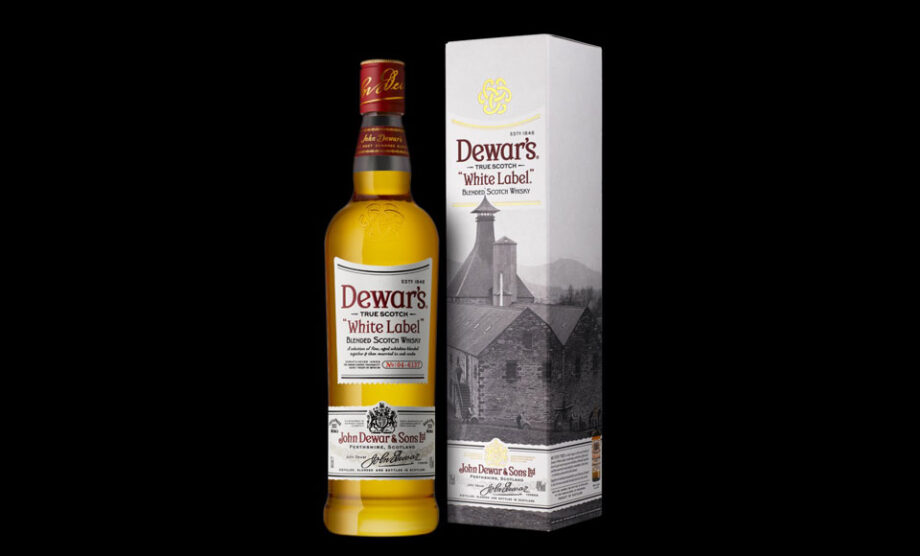 14/54
14/54Pros
- The entry-level White Label won the gold medal at the San Francisco Spirit Awards
- It’s one of the tastiest cheap whiskeys
- Good blended scotch for people who like whiskey highballs
Cons
- Not everyone may enjoy this drink on its own
Origin: Perth, Scotland
Similar price to Grant’s and Ballantine’s, with a few mid-range options thrown in there to keep the aficionados happy. The entry-level White Label enjoys solid reviews and won Gold at the San Francisco Spirit Awards though, making it a preferred alternative to other cheap brands in terms of taste for many.
Black Douglas
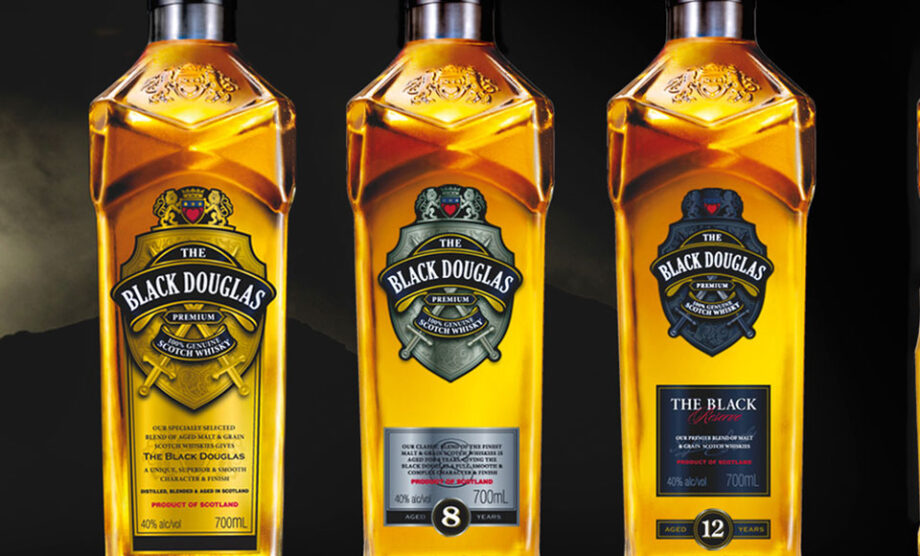 15/54
15/54Pros
- It’s a good entry-level whiskey brand
- The products are soft and have a smooth finish
- It can go down smoothly both with a mixer or neat
Cons
- It doesn’t offer the best value for money
Origin: Edinburgh, Scotland
Named after a legendary Scottish Warrior, a newer brand that pretty much sets the benchmark for quality in entry-level whisky. Solid value, if a little basic, and goes down smooth either neat or with a mixer.
Laphroaig
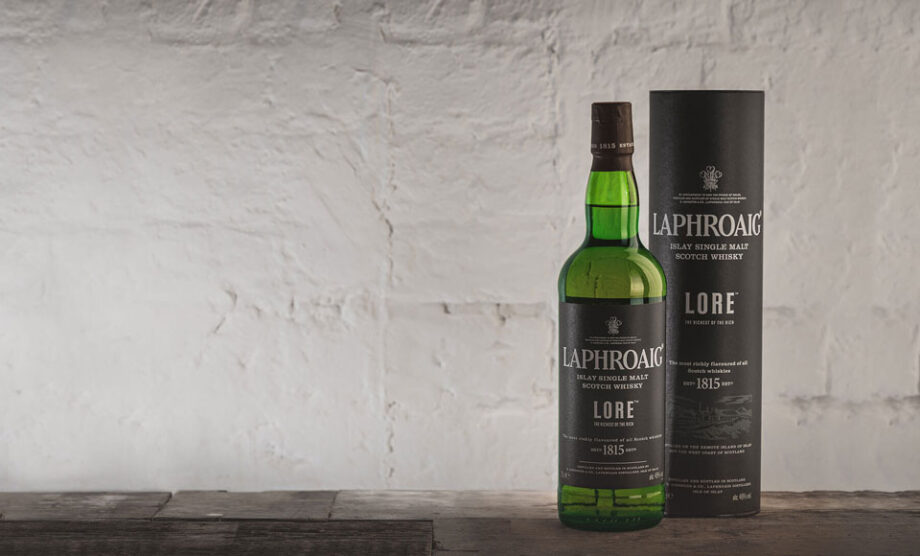 16/54
16/54Pros
- It’s one of the oldest scotch makers
- It was royally appointed to the Prince of Wales
- The flavour is very rich
Cons
- It’s very smoky, and not everyone may like the drink
Origin: Islay, Scotland
Royally appointed to the Prince of Wales, one of Islay’s oldest and most prestigious scotch makers. Coming from Islay, Laphroaig whiskies share the same smoky, peaty, seaweed-y characteristics as their neighbours and generally have a rich, full flavour. Not for the faint-hearted: they’re smoky as hell.
Proper No. Twelve
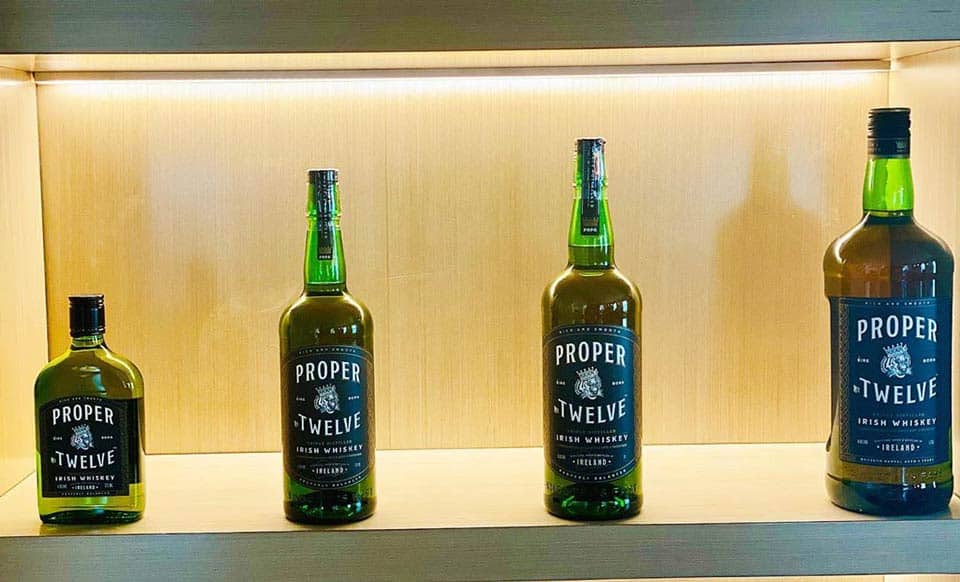 17/54
17/54Pros
- It has hints of honey and vanilla
- Ideal for newcomers who want something easier to drink
- It can be enjoyed both neatly or in cocktails
Cons
- The drink is not complex enough
Origin: Ulster, Ireland
Conor McGregor’s brand of whiskey is decidedly Irish. Smooth and easy-drinking with hints of vanilla and honey, this is a whiskey that will be hard to put down. Enjoy neat or in cocktails.
Auchentoshan
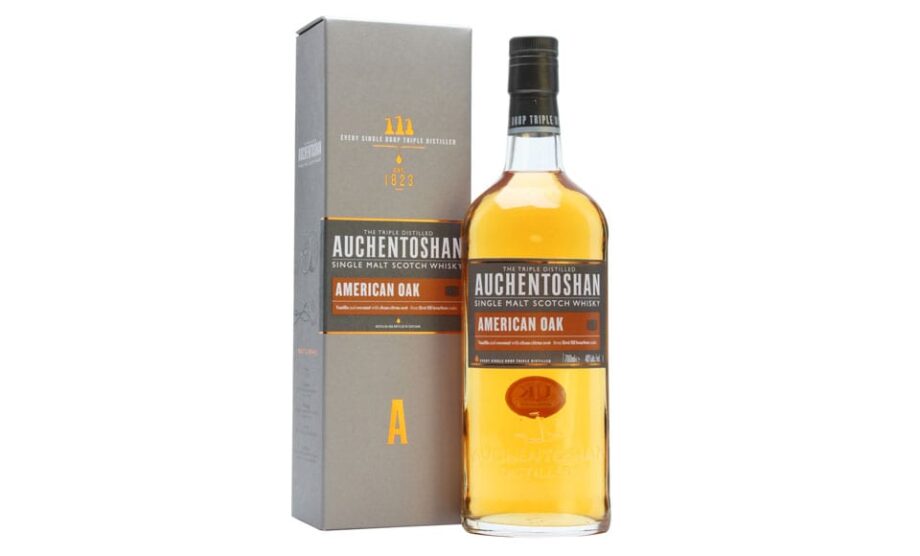 18/54
18/54Pros
- Their flavours are fruity and mellow
- It may appeal to a larger variety of people
- Matured in bourbon, Pedro Ximenez and Oloroso casks
Origin: Glasgow, Scotland
Exceptionally smooth is the only way to describe this triple-distilled Lowland Scotch by Auchentoshan. Their Three Wood offering is lovingly matured in bourbon, Oloroso and Pedro Ximenez casks that brings a distinct mellow and fruity flavour to the palate. For those who have tried Scotch whisky and feel that it’s not for them, give this a try before you call it a day.
Jack Daniel’s
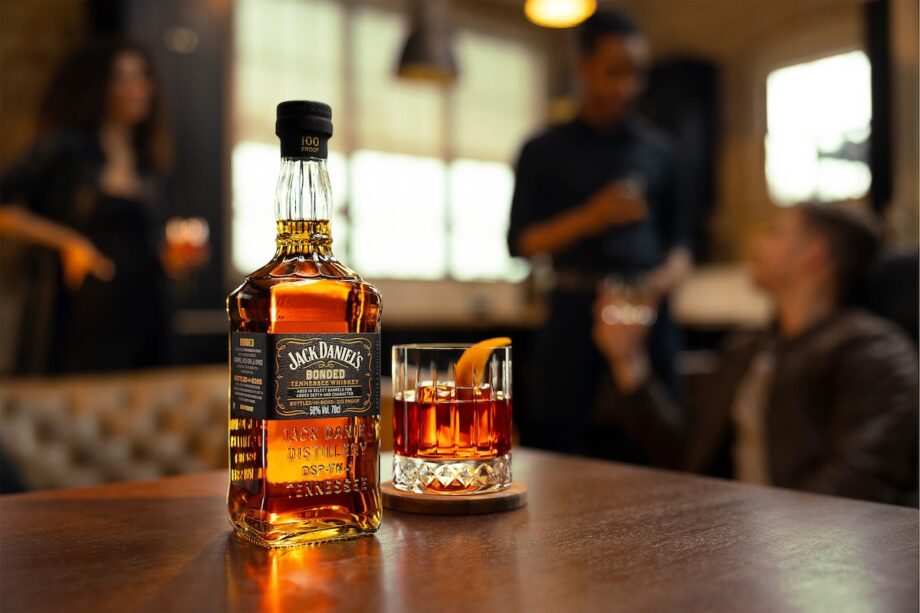 19/54
19/54Pros
- One of the cheapest and most popular brands in the world
- The beverages come in beautiful square bottles
- They have different flavours to choose from
Cons
- It may not always be good on its own
Origin: Lynchburg, Tennessee
Simply put, Jack Daniel’s is the best-selling brand of whiskey in the world. Contrary to popular belief, it’s actually a Tennessee whiskey, not a bourbon (although they are rather similar styles – whiskey is complicated).
The classic Old No. 7 with its square bottle and black label is a reliable drop, but their premium offerings are highly underrated, such as Jack Daniel’s Bonded.
Makers Mark
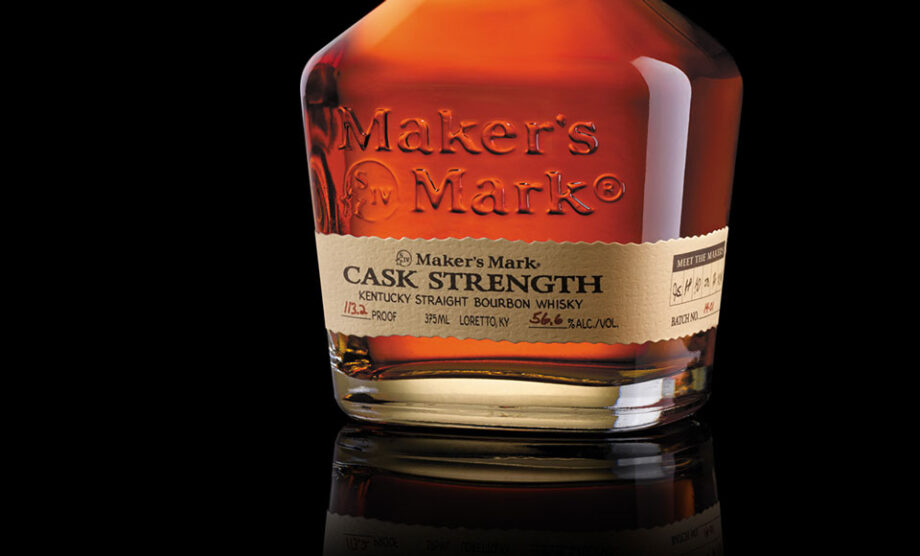 20/54
20/54Pros
- It has a nicely improved, small-batch flavour
- The drink has been around for more than 50 years
- The bottles are dipped in red wax to cover the top
Cons
- The taste is nothing out of the ordinary
Origin: Loretto, Kentucky
This bourbon whiskey has a slightly more hipster vibe, but it’s made by the same company that owns Jim Beam and Suntory Whisky in Japan. Maker’s Mark has been made for over 50 years, yet it’s only recently achieved popularity in Australia recently for its distinctly improved, small-batch flavour. Despite what you might think due to the scale of their production, every bottle is still hand-dipped in the famous red wax that covers its top.
Woodford Reserve
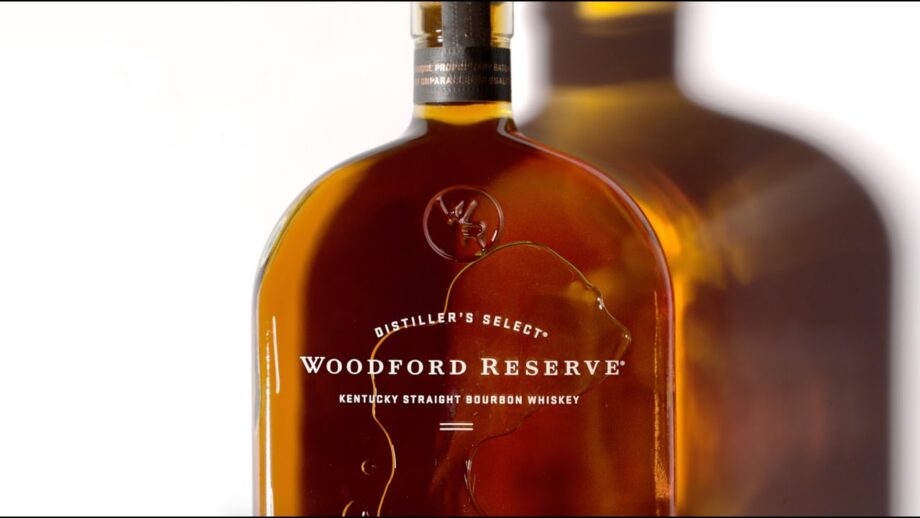 21/54
21/54Pros
- It’s one of the oldest bourbon brands in the world
- The taste is ideal for anyone who is just starting out with whiskey
- It has a very good price
Cons
- Whiskey fans might be looking for something more exquisite
Origin: Woodford County, Kentucky
One of the oldest bourbon brands, yet not well known in Australia due to the distillery ceasing operations for large parts of the 20th century. Since its comeback, has seen rave reviews for its taste and value. Woodford Reserve is an elevated drop great for winning over bourbon whiskey skeptics.
Bulleit
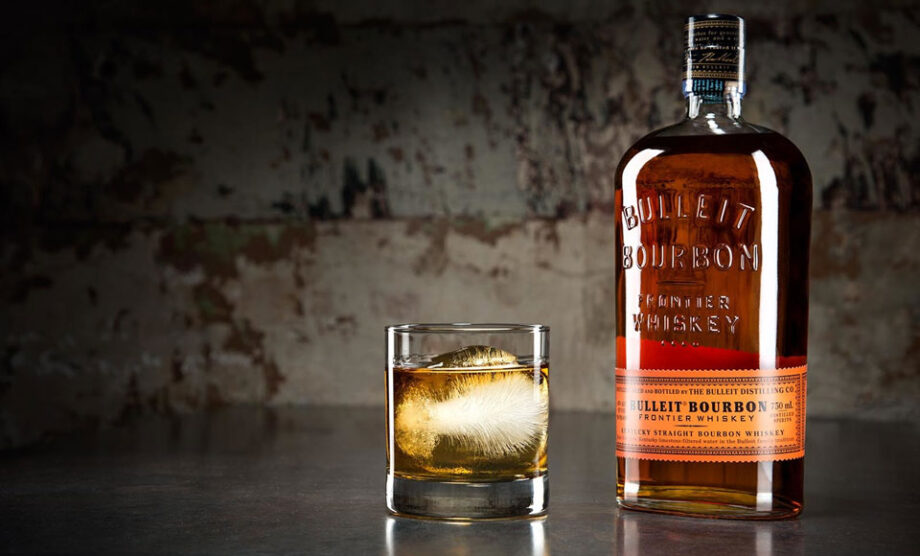 22/54
22/54Pros
- The bourbon has a pungent and powerful taste
- The lightness makes it perfect for beginners
- It has a kick but not a burn
Cons
- It’s not a very popular brand
Origin: Louisville, Kentucky
Owned by Diageo, the same company that also owns Smirnoff, Johnnie Walker, Bailey’s and Guinness, Bulleit is a tasty bourbon brand you ought to know. It’s surprising that it’s not bigger, but sits in a similar vein in terms of price and quality.
TINCUP
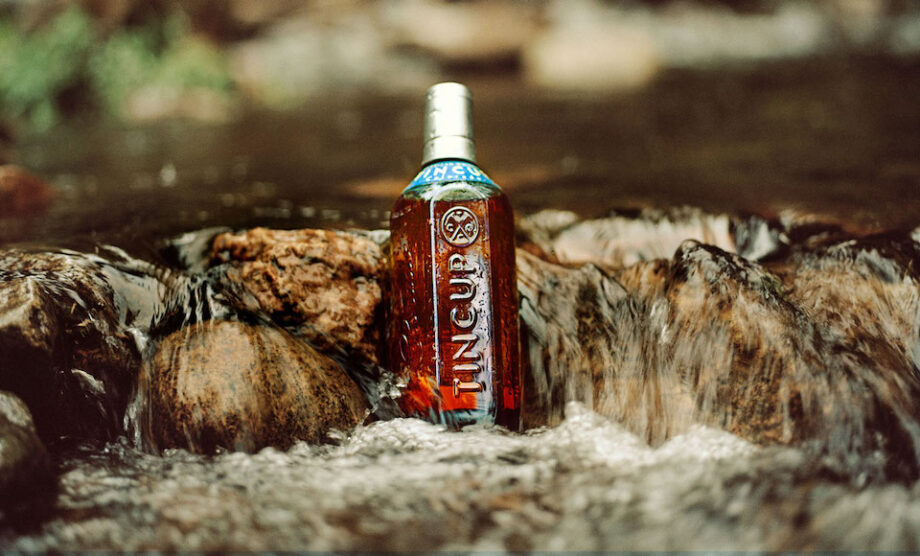 23/54
23/54Pros
- It mixes Indiana high rye bourbon and Colorado single-malt whiskey
- It has a rather flavourful and assertive taste
- The drink is quite versatile and works both neat and in cocktails
Cons
- It may be too light and thin for some whiskey drinkers
Origin: Tincup, Colorado
A blend of two American whiskeys – high rye bourbon, distilled and aged in Indiana and Colorado single malt whiskey – TINCUP is inspired by, and owes its flavour to, the iconic Rocky Mountains of Colorado. Its name honours Colorado’s mining pioneers and the tin cups from which they drank their whiskey – a time-honoured tradition you can take part in yourself with the bottle’s handy tin cup closure.
TINCUP’s high rye content makes it more assertive and flavourful than ordinary bourbon whiskeys, but with the smoothness of a good single malt. It’s a versatile drop that’s great in cocktails as well as neat.
Blanton’s
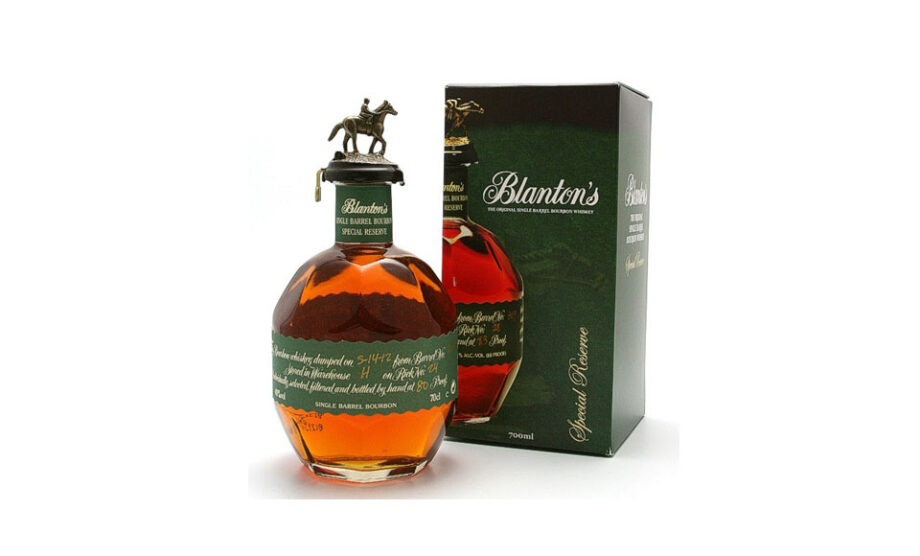 24/54
24/54Pros
- The brand’s whiskeys are often taking medals in worldwide spirit competitions
- It’s single barrel-produced
- The sip remains consistent year after year
Cons
- The whiskey is harder to find compared to other brands
Origin: Frankfort, Kentucky
Famously single barrel-produced, Blanton’s is getting into the premium area of bourbon, with the whiskey regularly medalling in spirit competitions the world over. A noted choice of Frank Underwood, and you can’t argue with that. Blanton’s is made in a reserved area of the larger Buffalo Trace distillery, which in itself has some notable drops worth trying.
George Dickel
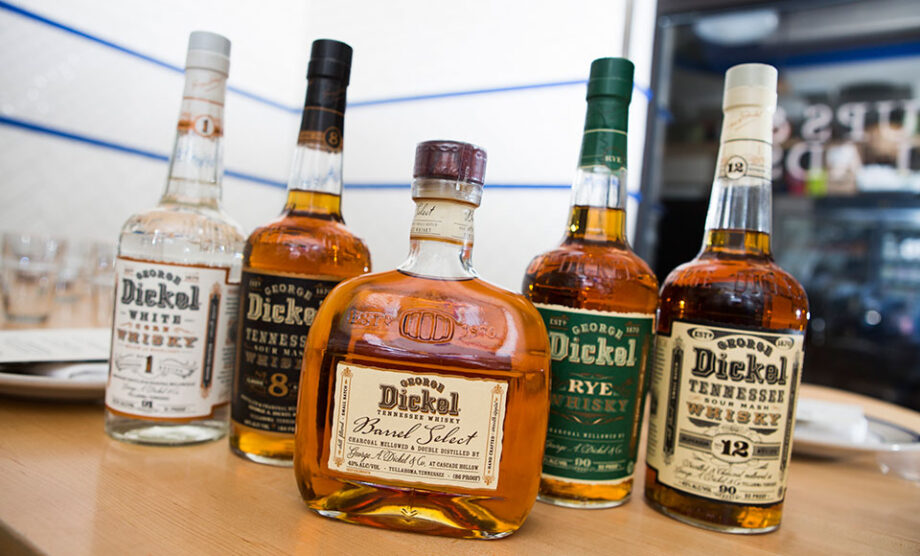 25/54
25/54Pros
- It’s cheaper and more accessible to a wider public
- The finish is long-lasting
- It has very complex flavours
Cons
- The drink may only work for some people when mixed
Origin: Tullahoma, Tennessee
Also owned by Diageo, George Dickel offers small-batch Tennessee whiskeys which were originally intended to compete with Scotch in terms of smoothness and flavour. As such, they use the traditional Scottish spelling of whisky on their labels. Confusing, we know. George Dickel is a standout American whiskey.
35 Maple Street
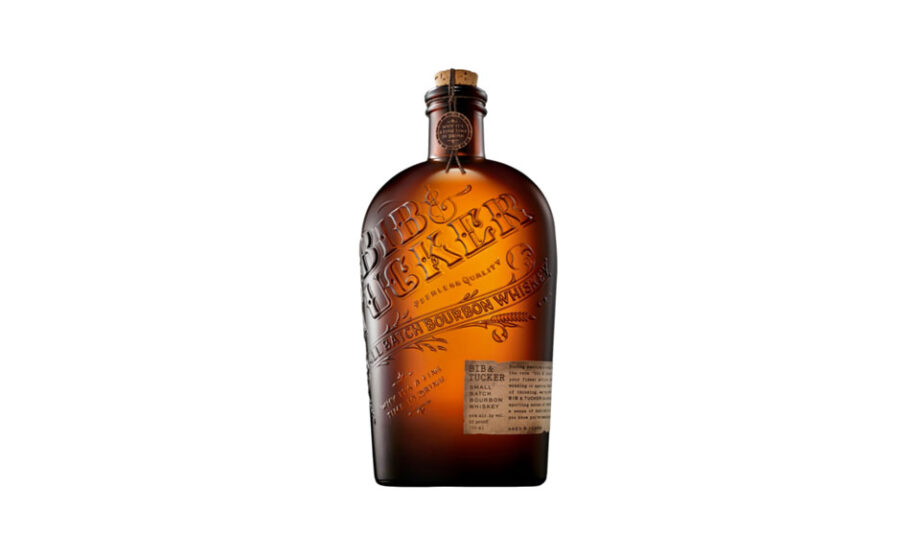 26/54
26/54Pros
- The palate has a small hint of fruit
- It has a very pleasant smell
- Great for both new and veteran whiskey drinkers
Cons
- It doesn’t have a long-lasting finish
Origin: Columbia, Tennessee
A newer, more modern spirit maker with ties to one of California’s most successful wine-producing families. 35 Maple Street makes a range of premium small-batch spirits, from whiskey to rum. Bib & Tucker Bourbon is their most famous offering, but it’ll set you back more than most.
Wild Turkey
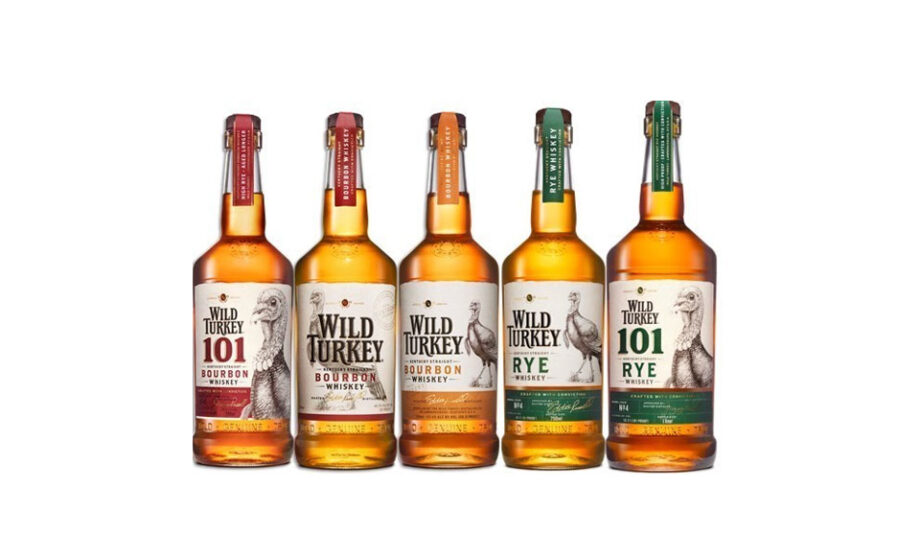 27/54
27/54Pros
- Good for people who want a more old-fashioned choice
- The price is not high
- The smell has a nice dry note
Cons
- The whiskey doesn’t have the best reputation
Origin: Lawrenceburg, Kentucky
Another famous whiskey brand, Wild Turkey is seen as a little classier than Jim Beam, yet still a choice of old-fashioned, rustic types in the American South. Their whiskeys are pretty straightforward in taste, and they’ve been trying particularly hard to shake off the white-trash, macho reputation of the brand in recent years.
Eagle Rare
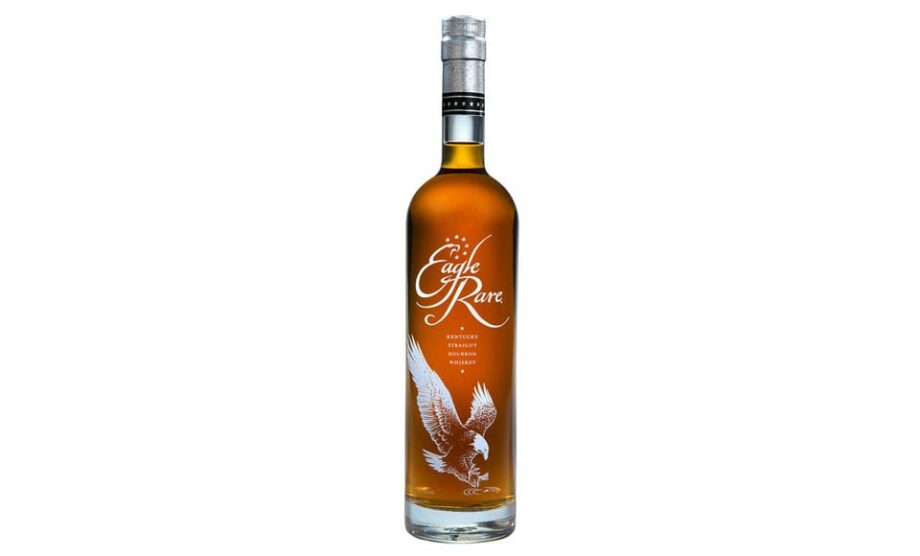 28/54
28/54Pros
- Bourbon that was aged in oak for more than 10 years
- They use products from one barrel only
- The nose is very complex
- It won a double gold medal at the San Francisco World Spirits Competition more than once
Cons
- It’s not that easy to find
Origin: Frankfort, Kentucky
A multi-award winner for a reason, Eagle Rare is an outstanding bourbon that’s been aged in oak for over 10 years. It is masterfully crafted by using product from only 1 single barrel and no blending from others. The rareness of this prized bourbon is most evident in its beguiling and complex nose. It’s also the only bourbon to ever win the double gold medal at the San Francisco World Spirits Competition five times.
Bushmills
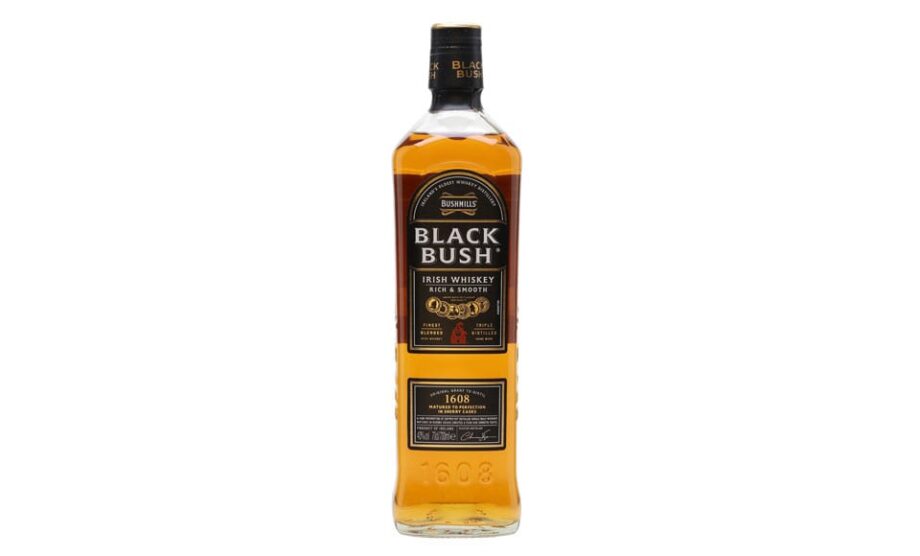 29/54
29/54Pros
- One of the finest whiskey makers in the world
- Perfect for special occasions
- The maturation, distillation, bottling, and shipping all happen in the same place
Cons
- It may be a bit too smooth and tame for some veterans
Origin: County Antrim, Northern Ireland
Located on County Antrim’s rugged coastline – just near the famous Giant’s Causeway – Bushmills is an Irish institution and one of the finest whiskey makers on the planet. It’s also the oldest whiskey distillery in the world, and one of only a handful of distilleries in the world where all of the distillation, maturation, bottling and shipping happens all under one roof, which is emblematic of Bushmills’ pursuit of perfection.
Bushmills’ Red Bush and Black Bush blends are old favourites but for our money, Bushmills 10 Year Old Single Malt is the best-value single malt whiskey on the market.
Jameson
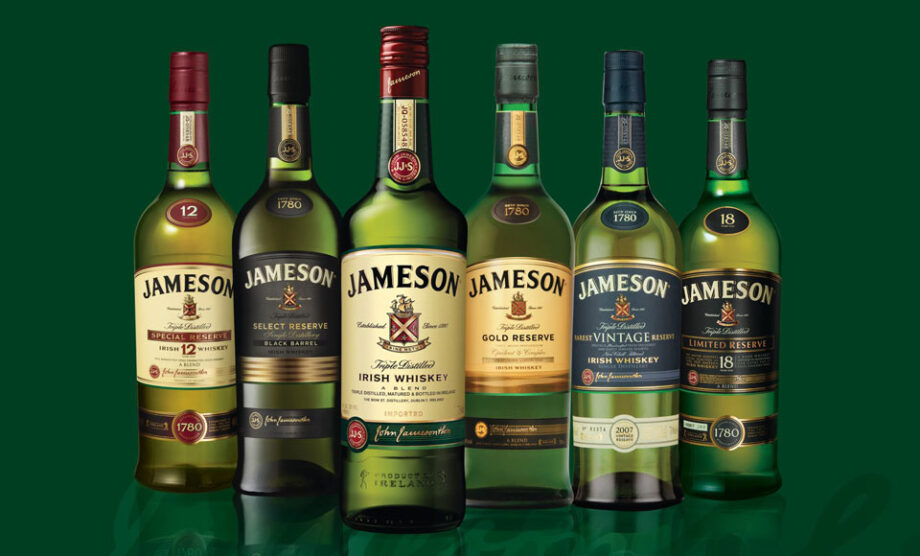 30/54
30/54Pros
- It’s one of the most popular whiskey brands in the world
- It’s perfect for mixed drinks
- Beginners love it
Cons
- The taste and feel are easy to forget
Origin: County Cork, Ireland
Easily the best selling and best known Irish whiskey. Standard Jameson is aged for 12 years, but the more premium 18 Year Old and reserve labels are regarded as some of the best Irish whiskey widely available. Some Irish pubs in Australia go through 20 bottles of the stuff per day – it’s very popular as a mixer. Jameson and dry is a quintessentially refreshing drink.
Tullamore Dew
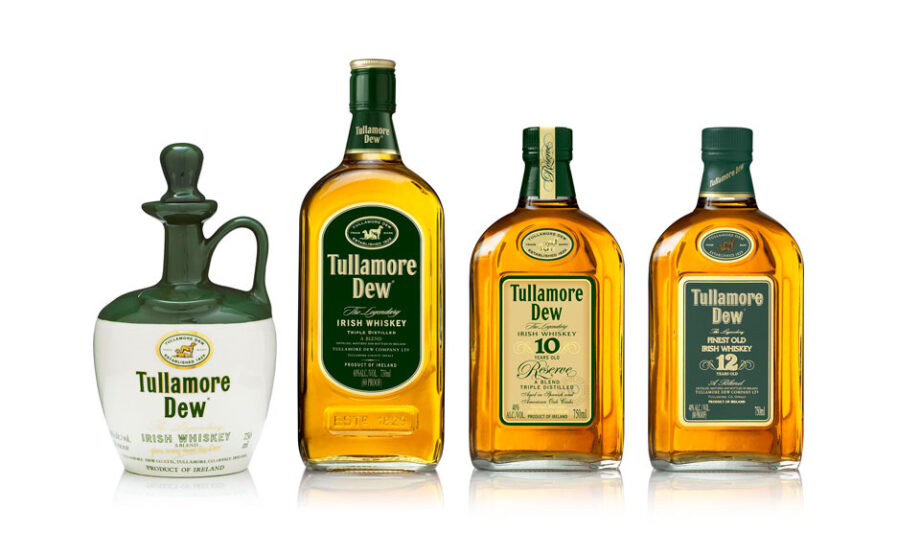 31/54
31/54Pros
- It mixes single malt, grain whiskey, and single pot still
- It’s the first brand that had whiskey finished in cider casks
- The brand is one of the fastest-growing ones
Cons
- It lacks character compared to other whiskeys
Origin: Tullamore, Ireland
A blend of all 3 types of Irish whiskey (single malt, single pot still and grain whiskey), Tullamore Dew is Ireland’s fastest-growing whiskey brand, doubling their sales since 2005, and the first brand to introduce whiskey finished in cider casks.
The Dubliner
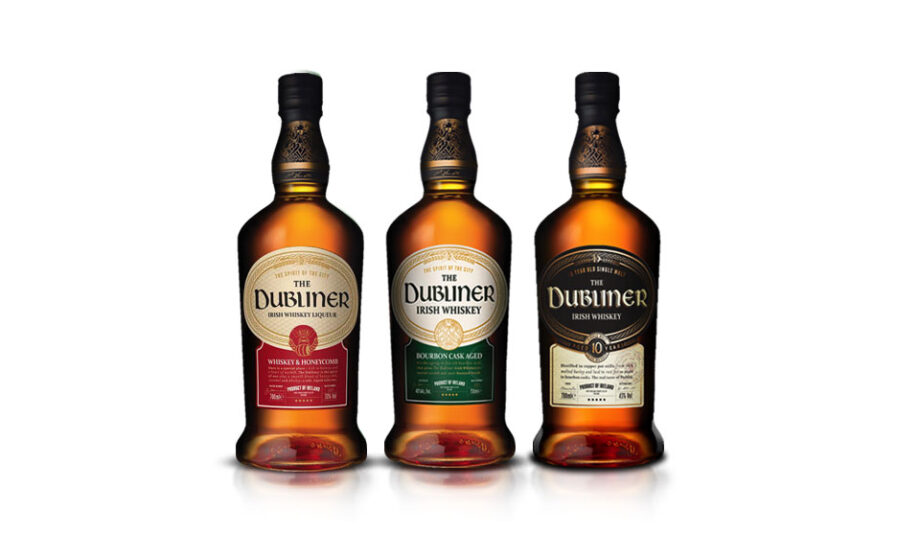 32/54
32/54Pros
- Great for people who like traditionally aged whiskey
- The drink has a warmer and sweeter taste
- It has an almost creamy palate
Cons
- The finish doesn’t last very long
Origin: Ireland
Traditionally aged in old bourbon barrels, which The Dubliner claim gives their Irish whiskey a much warmer, sweeter taste. They also offer an Irish whiskey liquor which is the Paddy answer to Southern Comfort.
Glendalough
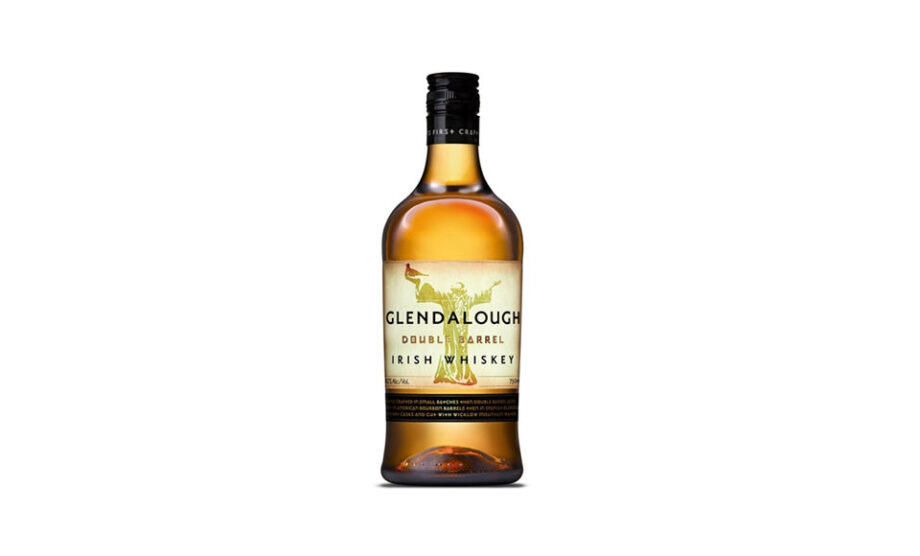 33/54
33/54Pros
- It won Best Irish Whiskey at the 2015 San Francisco World Spirit Awards
- It’s one of the most popular and celebrated distilleries
- It has affordable options
Cons
- It lacks a distinct flavour
Origin: Wicklow Mountains, Ireland
One of Ireland’s most celebrated distilleries, yet pretty unknown Down Under. Glendalough 13-Year-Old Single Grain won Best Irish Whiskey at the 2015 San Francisco World Spirit Awards. Glendalough also make poitin, a sort of Irish moonshine which was outlawed in the mid 1600’s.
Writer’s Tears
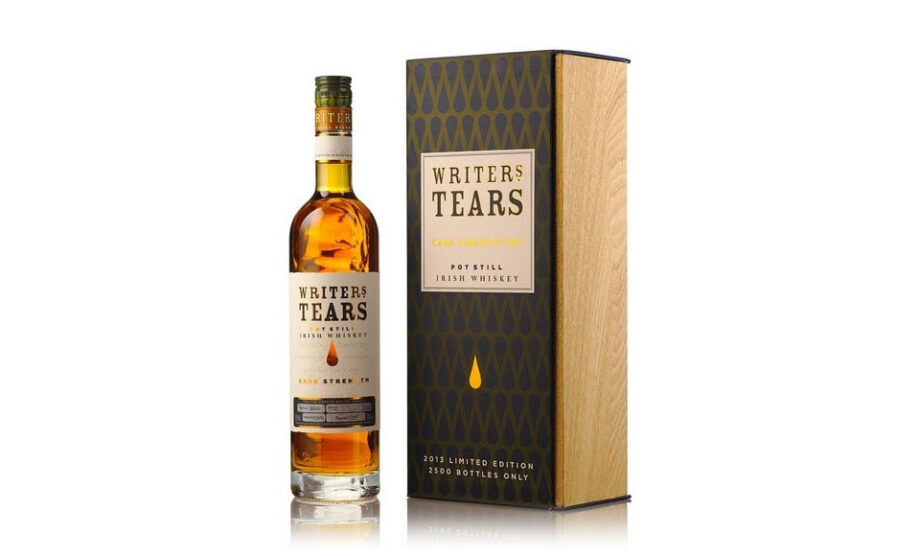 34/54
34/54Pros
- Traditionally made whiskey that mixes single malt and spiced pot still whiskey
- You can choose from different cask strengths
- It’s packed in attractive bottles
Cons
- It’s not the cheapest whiskey
Origin: Ireland
Still pot Irish whiskey that supposedly offers a very similar drinking experience to a fine bourbon. To achieve that, they’ve followed the traditional Irish method of combining a spiced pot still whiskey with a single malt. They also offer a cask strength variety, cranking the ABV from 40% to 52%. We love the name!
Teeling
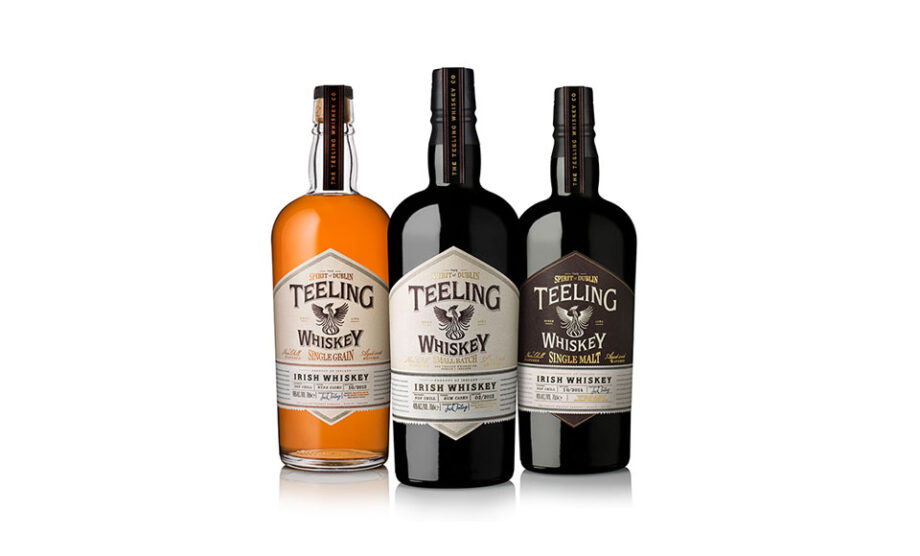 35/54
35/54Pros
- They have a large variety of whiskeys
- They also create a 52.5% Poitin
- Their drinks are made in the first Dublin distillery that opened in more than 125 years ago
Cons
- It’s not recommended neat
Origin: Dublin, Ireland
Make a huge range of very premium, single malt, single grain and small batch Irish whiskeys ranging up to 30 years old. Made in the first new distillery in Dublin to open up in over 125 years, Teeling‘s been taking off like a rocket. Teeling also make a 52.5% poitin, which is clearly made for the bravest among us.
Midleton
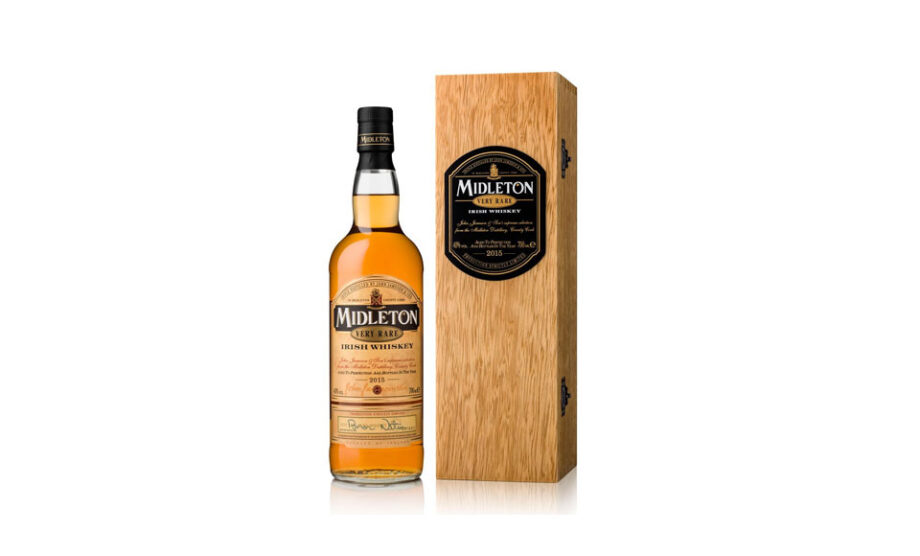 36/54
36/54Pros
- They mix annual picks of the best Midleton Distillery whiskeys
- It’s a very rare whiskey
- It’s perfect for any occasion
Origin: County Cork, Ireland
Rare and expensive. Founded in 1984, they’ve created a whiskey blending annual selections of the best whiskeys from the old Midleton Distillery, which to this day contains the largest pot still in the world. Hence why it’s called “Very Rare” by Midleton themselves.
The Irishman
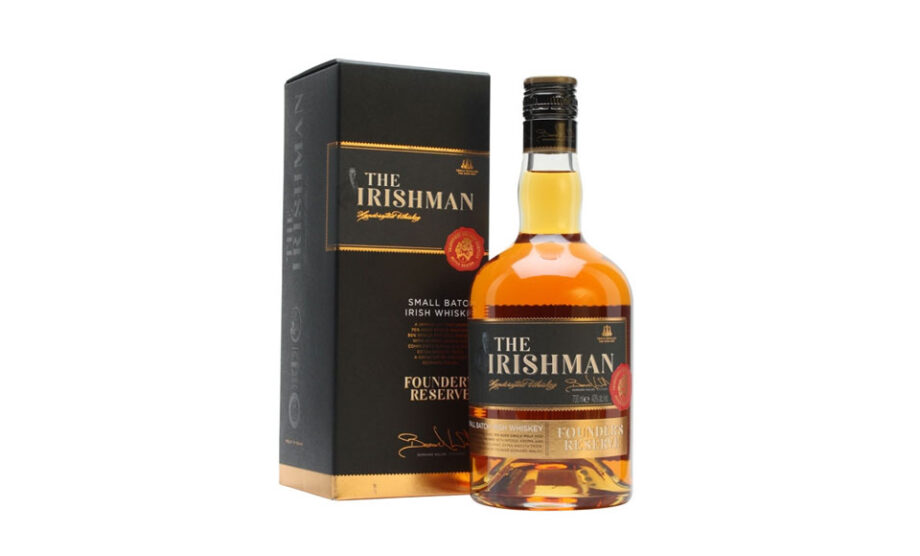 37/54
37/54Pros
- The single-malt whiskey is aged in bourbon and sherry casks
- It has an exceptional flavour
- You can choose from different maturation years
Cons
- The batches have limited bottles
Origin: Ireland
Guess where this one’s made? Reaching the upper crust of Irish whiskey, their base-level blended whiskey will set you back $75 and is limited to 5,000 bottles per batch. Their single malt whiskey is aged in bourbon and sherry casks, offering one of the most classic Irish whiskey experiences available.
Kilbeggan
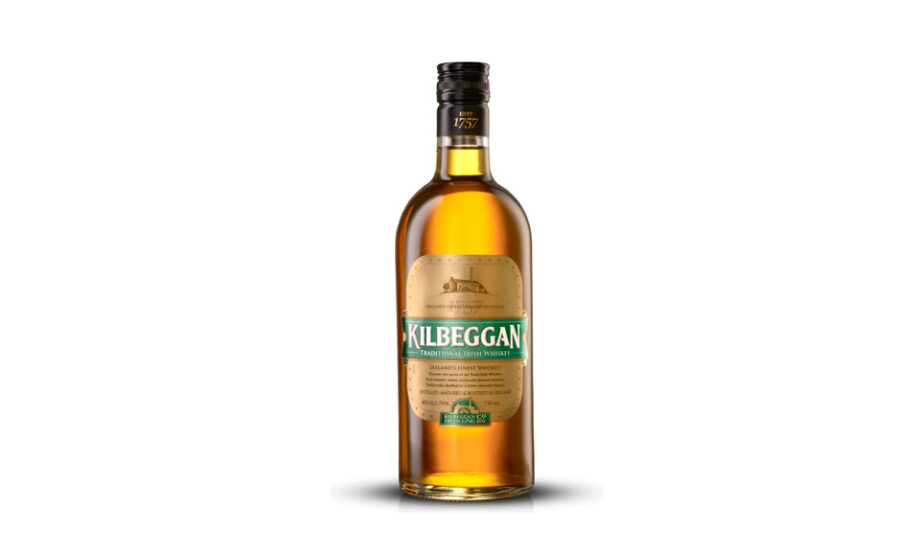 38/54
38/54Pros
- Ideal option for anyone new to whiskey
- The flavour is smooth and distinctive
- Created in one of the oldest distilleries in the world
- It won the gold medal at San Francisco
Cons
- The spicy taste doesn’t last long
Origin: County Westmeath, Ireland
Made in one of the world’s oldest distilleries, and potentially a better shout than Jameson for the price. Very much an entry-level option for someone looking to get into Irish whiskey, Kilbeggan offers the smooth, distinctive flavour that you’d expect and has previously won gold at San Francisco too.
Suntory Kakubin
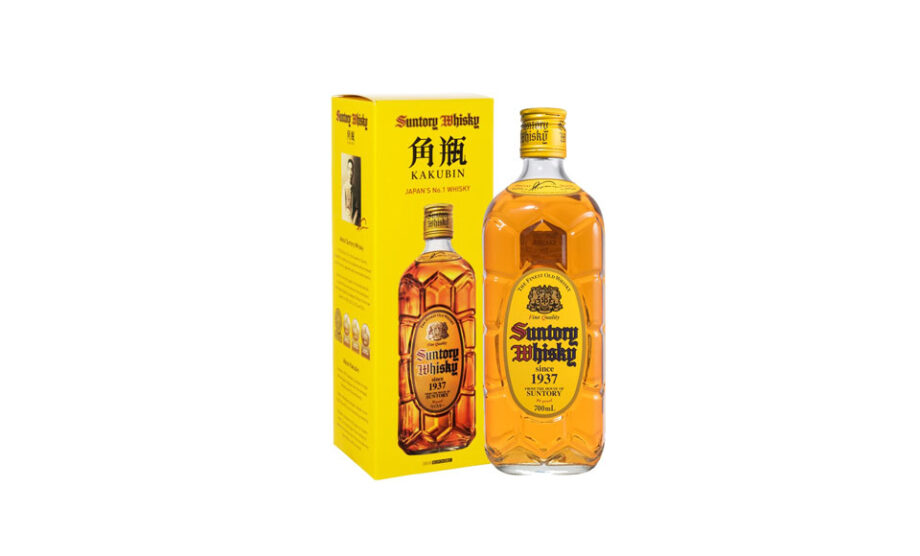 39/54
39/54Pros
- It uses blends from the premium distilleries in Suntory
- It’s the best-selling brand of Japanese whiskey
- It can be drunk on its own or in a highball
- The taste is smooth and sweet
Origin: Kyoto, Japan
The best-selling Japanese whisky in the world, Suntory Kakubin is an absolute staple. Sweet, smooth, and full-bodied, it’s made of blends from Suntory’s more premium distilleries. It’s the quintessential ingredient in a whisky highball, but it’s also great on its own.
Yamakazi
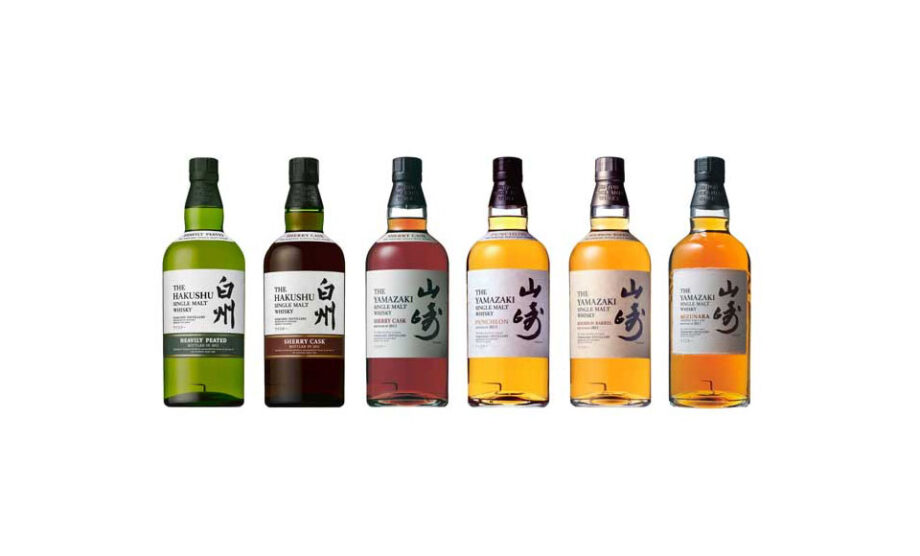 40/54
40/54Pros
- Made by the oldest Japanese distillery
- The flavour is sweet and soft
- It has a long and balanced finish
Cons
- It can be a bit pricey for beginners
Origin: Osaka, Japan
Yamazaki is the oldest and most prestigious whisky distillery in Japan: they’re ‘blue chip’ whiskies. Yamakazi whiskeys offer a rich colour and a softer, sweeter flavour than most Japanese whiskies. They’re not cheap, but they’re very good.
Hakushu
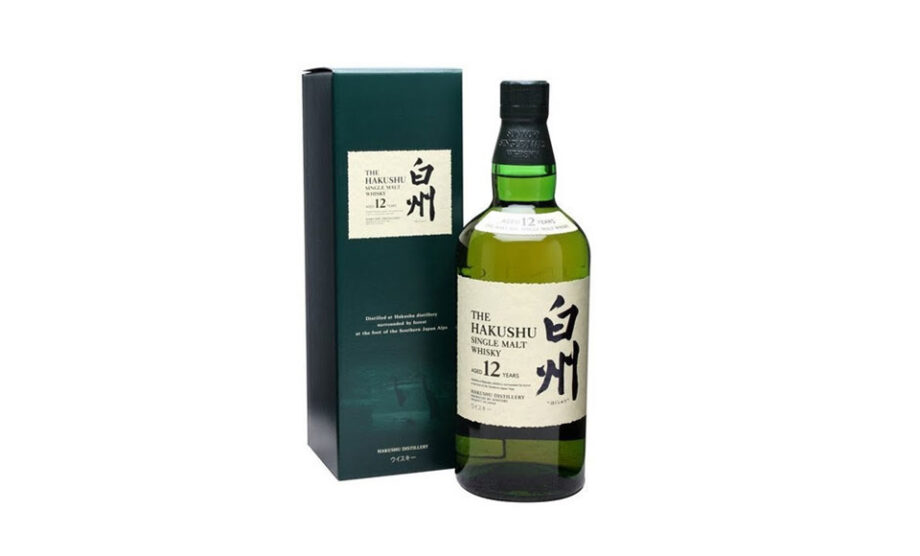 41/54
41/54Pros
- It has a sweet and amazing flavour
- You can also get it as a blend
- It’s made in the Hakushu distillery in Suntory
Cons
- It may be too light for some people
Origin: Chubu, Japan
Another single malt made by Suntory in the Hakushu distillery, but much lighter in colour and livelier in flavour. Drier, stronger tasting, and also available as a blend, a 12 Year Old single malt and an 18 Year Old single malt.
Hibiki
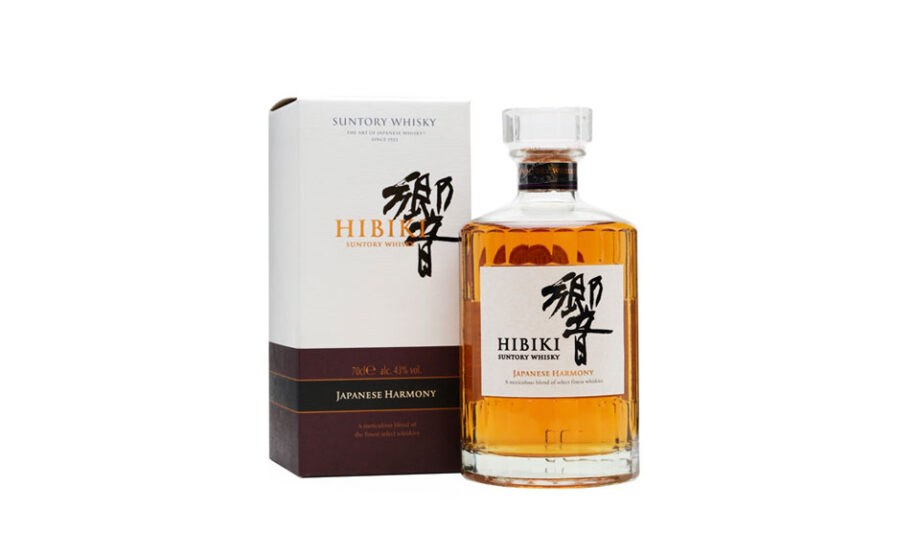 42/54
42/54Pros
- They use a high-quality range of blends
- They have something for drinkers of all experiences and tastes
- They use single malt and grain whiskeys from both distilleries in Suntory
Cons
- It’s not the cheapest whiskey
Origin: Osaka, Japan
Suntory’s premium range of blends, offered as 3 distinct whiskeys: the entry-level harmony blend, along with more expensive 12 and 17-Year-Old whiskies. All are made of selected single malt and grain whiskeys from both Suntory distilleries. Made famous by Bill Murray in Lost in Translation: “For relaxing times, make it Suntory time.”
Nikka
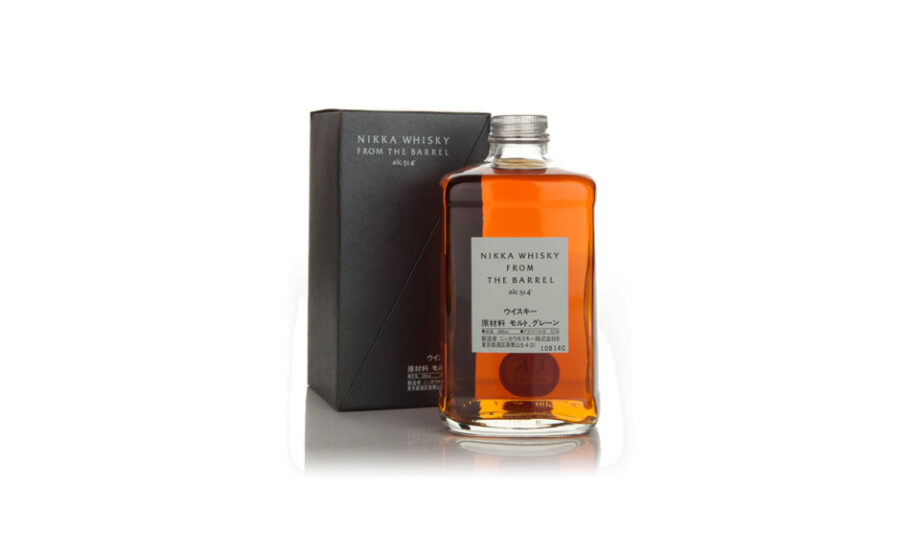 43/54
43/54Pros
- It’s produced by a major distiller in Japan
- The whiskey is peaty and smokey
- It’s a very complex blend of flavours
Cons
- It may be too smokey for some people
Origin: Tokyo, Japan
The product of Japan’s other major distiller, located in the Japanese mountains at a location providing similar water and grain as you’d find in Scotland. Nikka makes smokier, peatier whiskeys than Suntory. Nikka Whisky From The Barrel is a classic.
Ichiro’s Malt & Grain Blended Whisky
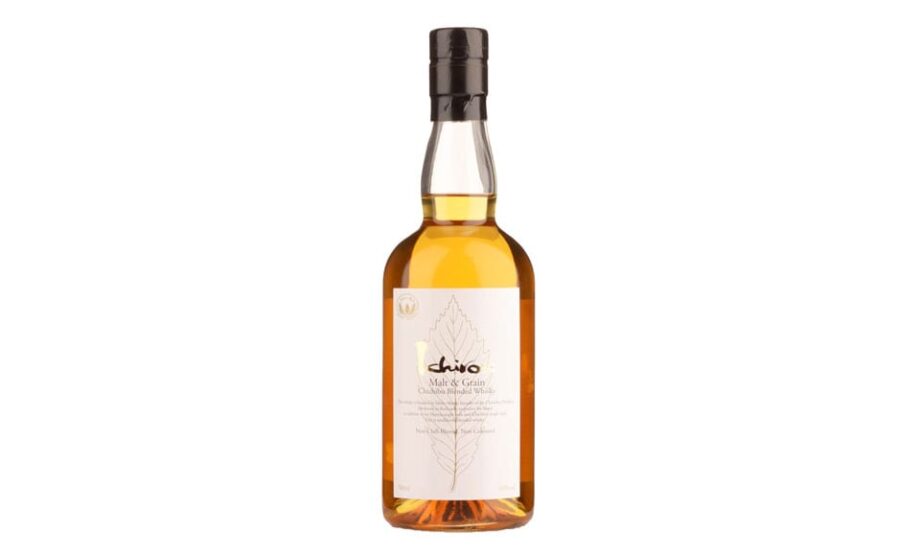 44/54
44/54Pros
- There’s no colouring added in the drinks
- It’s a non-chill-filtered drink
- It has a very nice nose
Cons
- It’s not the cheapest whiskey
Origin: Saitama, Japan
King of the Japanese indie whisky makers is Ichiro Akuto and his Chichibu Distillery. The man’s vision was to offer a quality Japanese whisky experience that was affordable for everyone. The result is Ichiro’s Malt & Grain Blended Whisky, which is non-chill filtered and with no colouring added.
Canadian Club
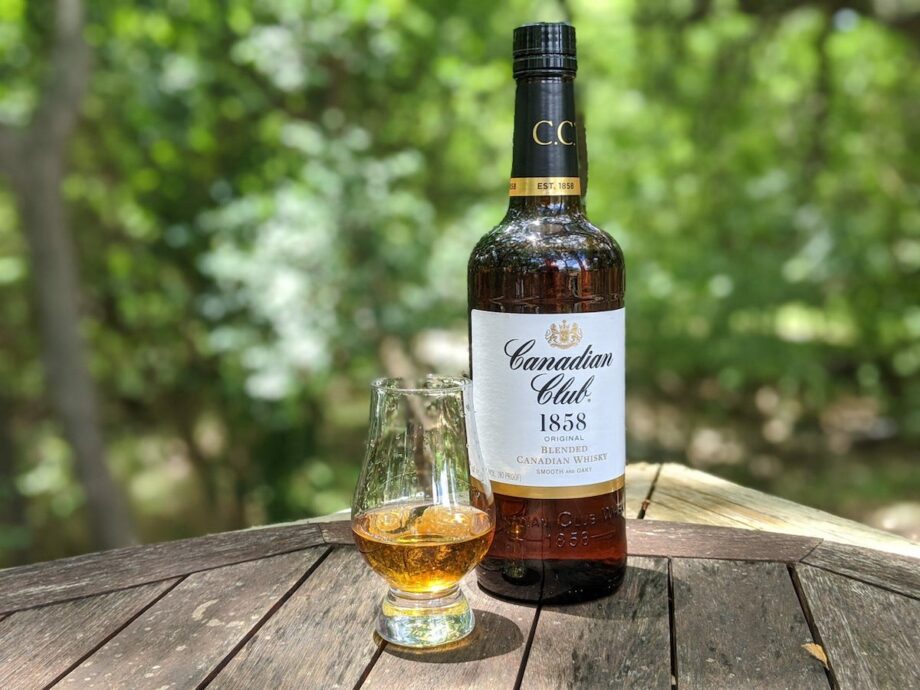 45/54
45/54Pros
- It’s a very affordable whiskey
- It’s been made since 1858
- Perfect for when you want a mixer
Cons
- The taste is not too memorable
Origin: Ontario, Canada
Cheap, dependable, very popular and more often drunk with mixers than anything else, Canadian Club is exceptionally popular in Australia and is probably the world’s best-known Canadian whisky. Made since 1858, the upper tiers of Canadian Club’s range were the choice of both James Bond and Queen Victoria.
Crown Royal
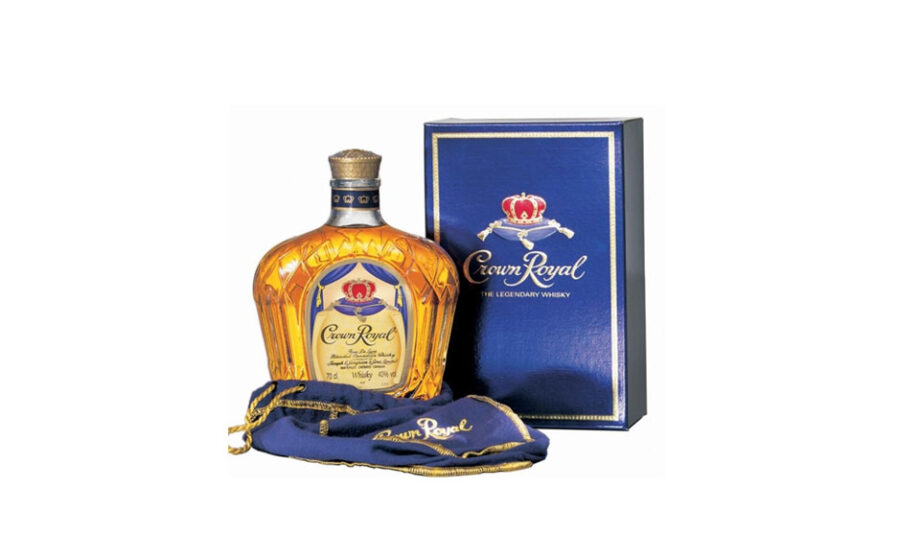 46/54
46/54Pros
- It has a very unique bottle
- The range of whiskey options is very diverse
- It’s very smooth and sweet
Cons
- It may not be what veterans are looking for
Origin: Ontario, Canada
Crown Royal is the other famous Canadian whisky, well-known for its unique bottle and purple bag. Crown Royal has an exceptionally diverse range: Crown Royal Northern Harvest Rye was named world whisky of the year in Jim Murray’s 2016 Whisky Bible.
Fireball
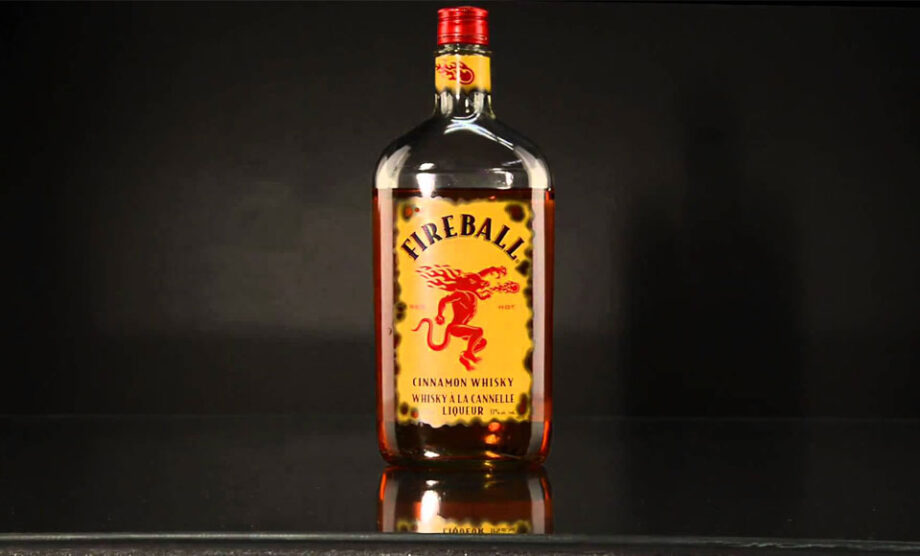 47/54
47/54Pros
- It’s great for when you want a cocktail
- It has a sweeter taste
- It has an accessible price
Origin: Canada
Bet you didn’t know Fireball was Canadian! Blended and flavoured with cinnamon, generally drunk by people who have little to no regard for their vocal cords, Fireball isn’t a whisky you’d sip neat: it’s something you’d shoot or mix into a cocktail. Still, Fireball is a fun and tasty drop. Our advice? Mix it with fresh cloudy apple juice. It tastes like an apple pie.
Whistlepig
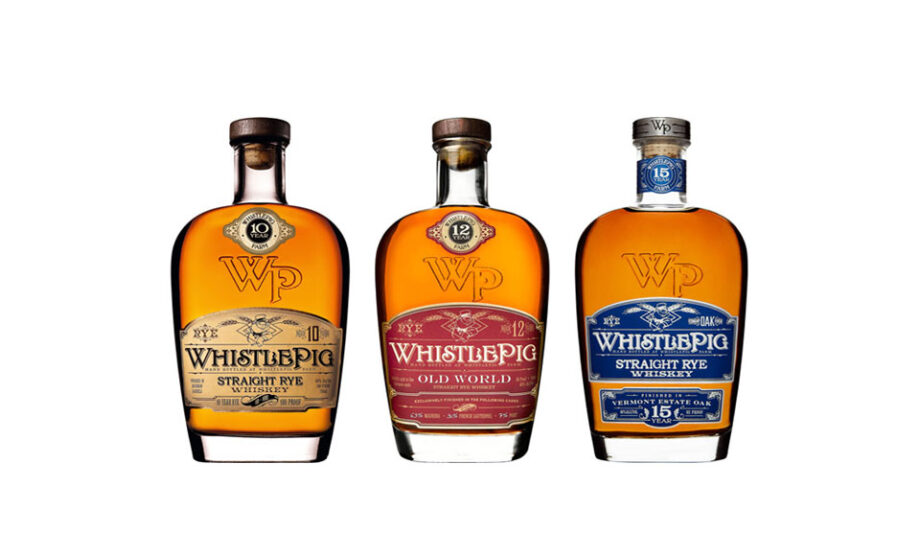 48/54
48/54Pros
- It’s made and aged in Canada and later in the USA
- Perfect for more experienced drinkers
- It’s a 100% straight rye whiskey
- It’s very delicious
Cons
- It may not be perfect for beginners
Origin: Shoreham, Vermont
100% straight rye whiskey, initially made and aged in Canada before being aged for another 7 years in Vermont, USA. 50% ABV, very strong, very dry, but regarded as delicious too. Made by the former master distiller from Maker’s Mark.
Sullivan’s Cove
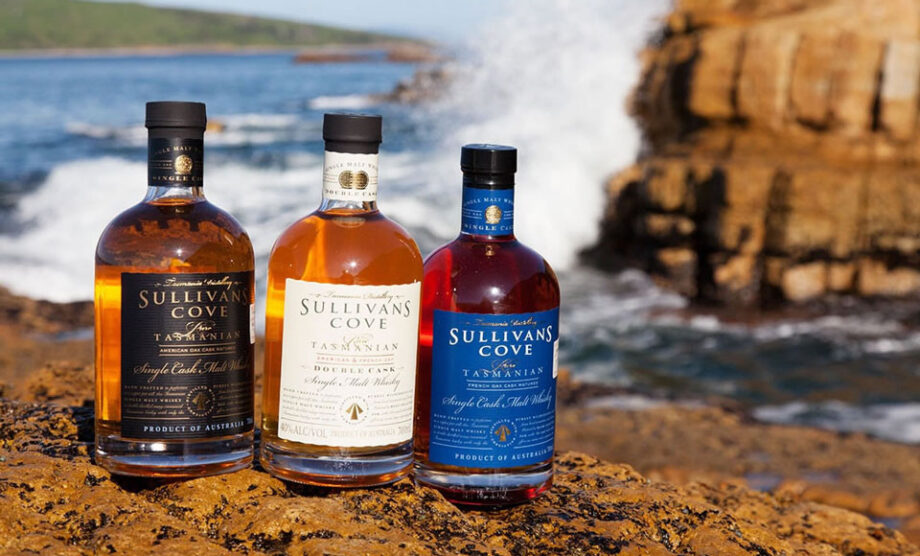 49/54
49/54Pros
- It’s one of the oldest whiskeys in the world
- It’s in high demand
- It won the World’s Best Whiskey title at the San Francisco Spirits Awards
Origin: Hobart, Tasmania
Sullivan’s Cove makes some of Australia’s best and oldest whiskys, and have won the title of World’s Best Whisky at the San Fran Spirit awards too. Near impossible to buy these days, very expensive, but always in hot demand both locally and world-wide.
Starward
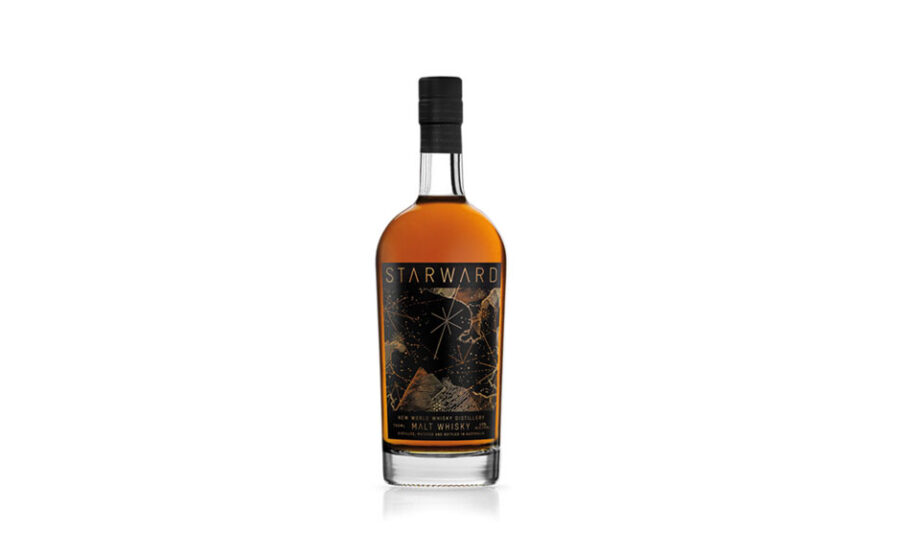 50/54
50/54Pros
- They have a lot of cask variety
- It’s a very popular brand
- They also have wines aged in local wine barrels
Cons
- It’s not the cheapest brand
Origin: Melbourne, Australia
Made in Victoria from locally sourced barley to create an immensely popular new-world whisky, Starward is a very popular Australian whisky brand. They also offer a wine cask variety, aged in local wine barrels.
Hellyers Road
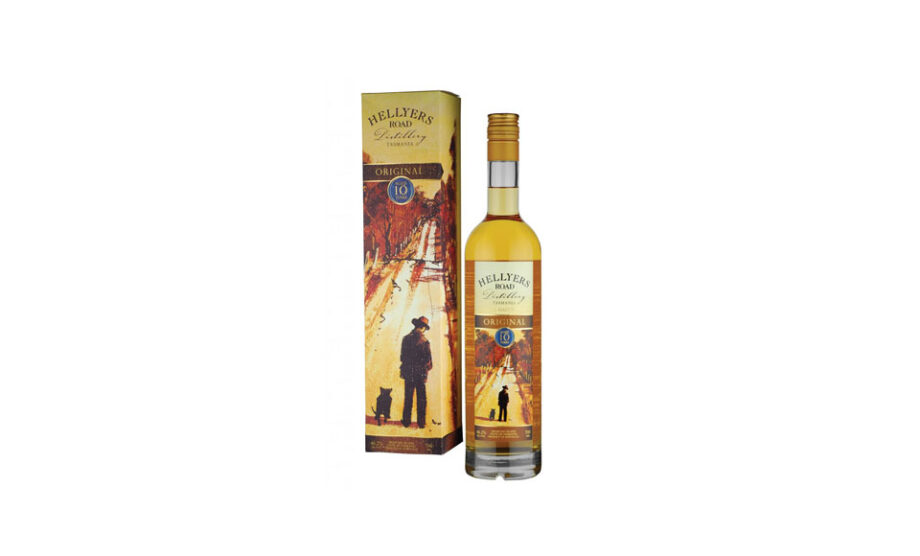 51/54
51/54Pros
- The Scotch-style whiskey is heavily peated
- Great for people who prefer single malt
- They also offer wine-inspired options
Origin: Burnie, Tasmania
Another very popular Tasmanian distillery, making single malt and heavily peated Scotch-style whisky. They also offer wine-inspired varieties, finished in local pinot noir and port barrels for a deeper, richer flavour.
Bakery Hill
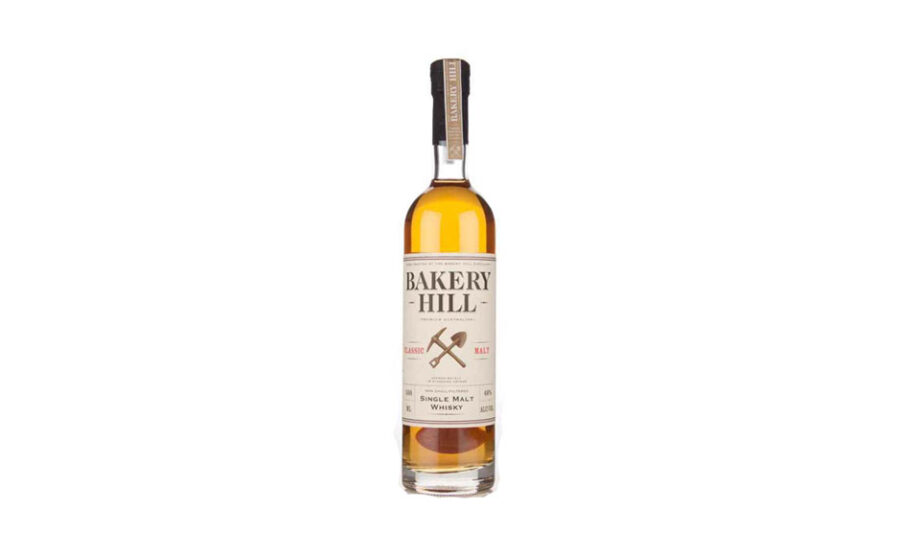 52/54
52/54Pros
- It has 60% ABV
- It’s complex and flavorful
- The whiskey is very strong and rich
Cons
- It’s on the pricier side
Origin: Melbourne, Australia
Cask-strength single malt that goes into the bottle at about 60% ABV. Very rich, very flavourful and very complex, with a range of tasting notes identified throughout their entire range.
Lark
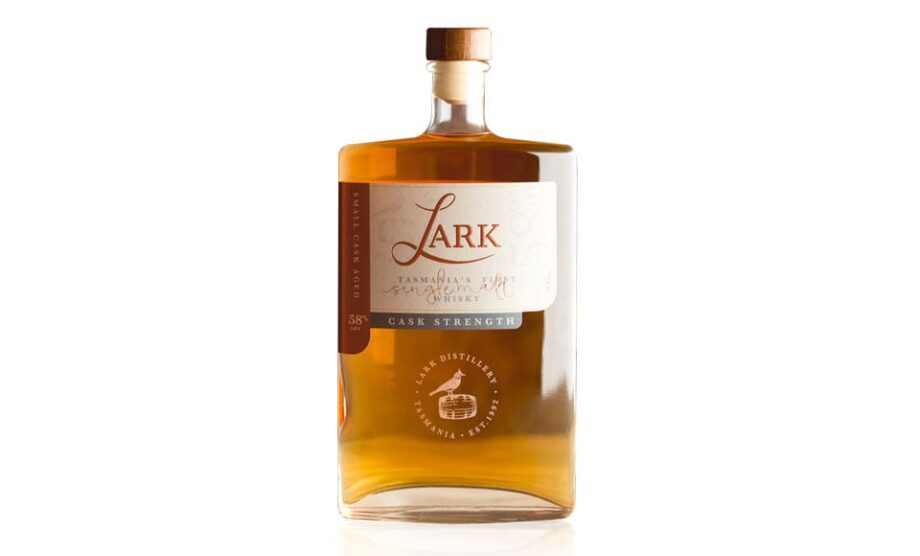 53/54
53/54Pros
- It’s an Australian brand
- The barrels they mature the drinks in have a large surface for faster evaporation
- It has fruit and vanilla notes
Origin: Hobart, Tasmania
Australia’s most famous whisky brand. The flagship product of Lark Distillery is matured for 5-8 years in small barrels which have a much larger surface area-to-volume of liquid. This allows a faster rate of evaporative losses and a considerably shorter maturation period than that required with the larger barrels commonly used in Scotland. Its distinctive profile is created with Tasmanian (Franklin) barley malted at the Cascade Brewery.
Smith’s
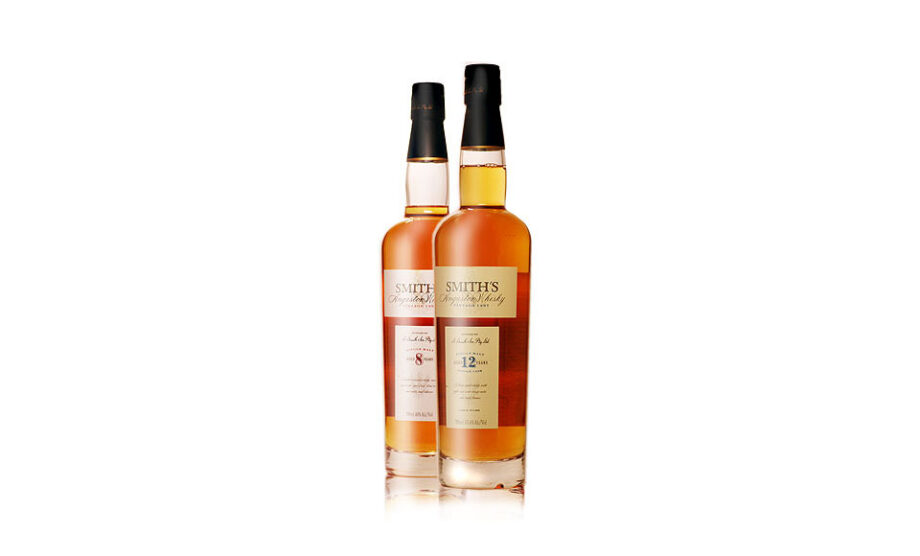 54/54
54/54Pros
- Distilled in Australia’s Barossa Valley
- You can find drinks between 8 and 14 years old
- It’s great for newer whiskey drinkers
Origin: Adelaide, Australia
Distilled deep in Australia’s Barossa Valley, Smith’s makes a range of younger whiskies that range from 8 to 14 years old. A solid entry point to new-world whisky.
